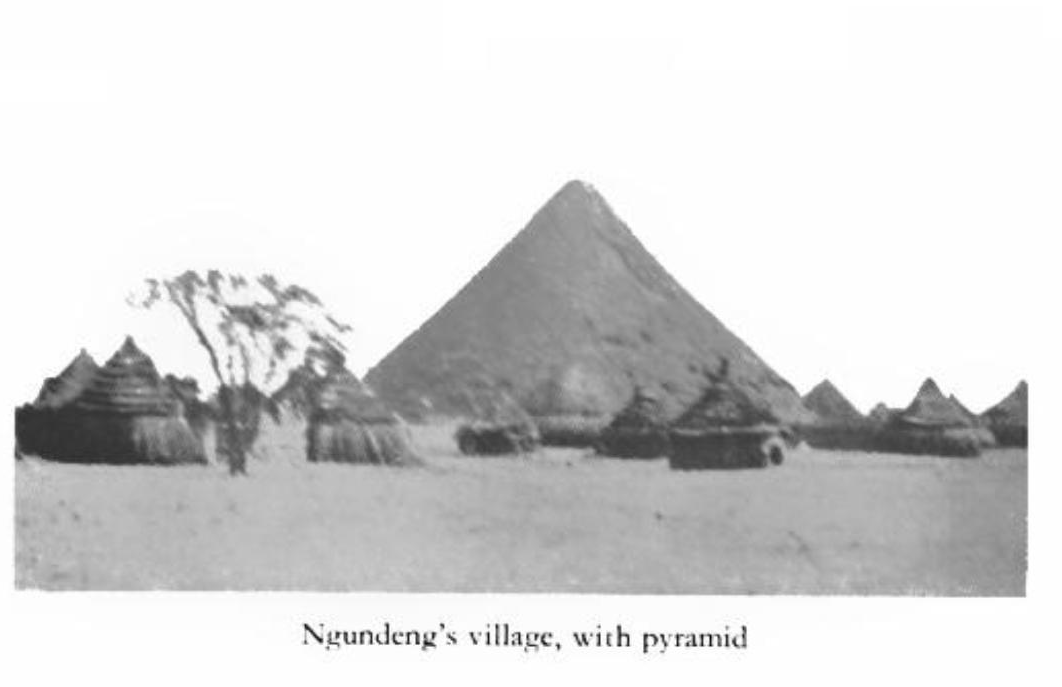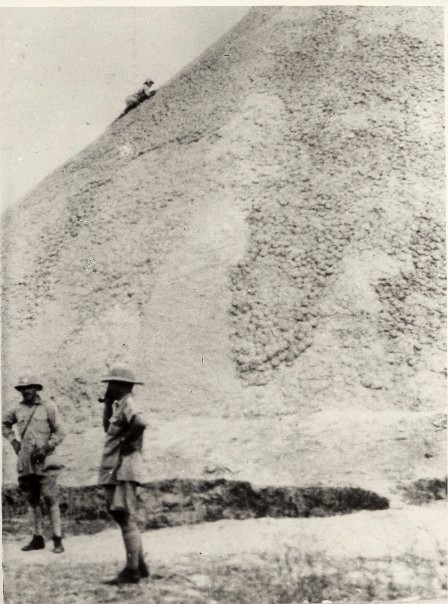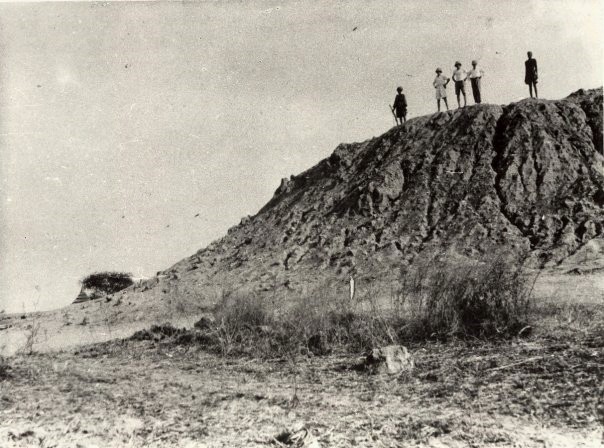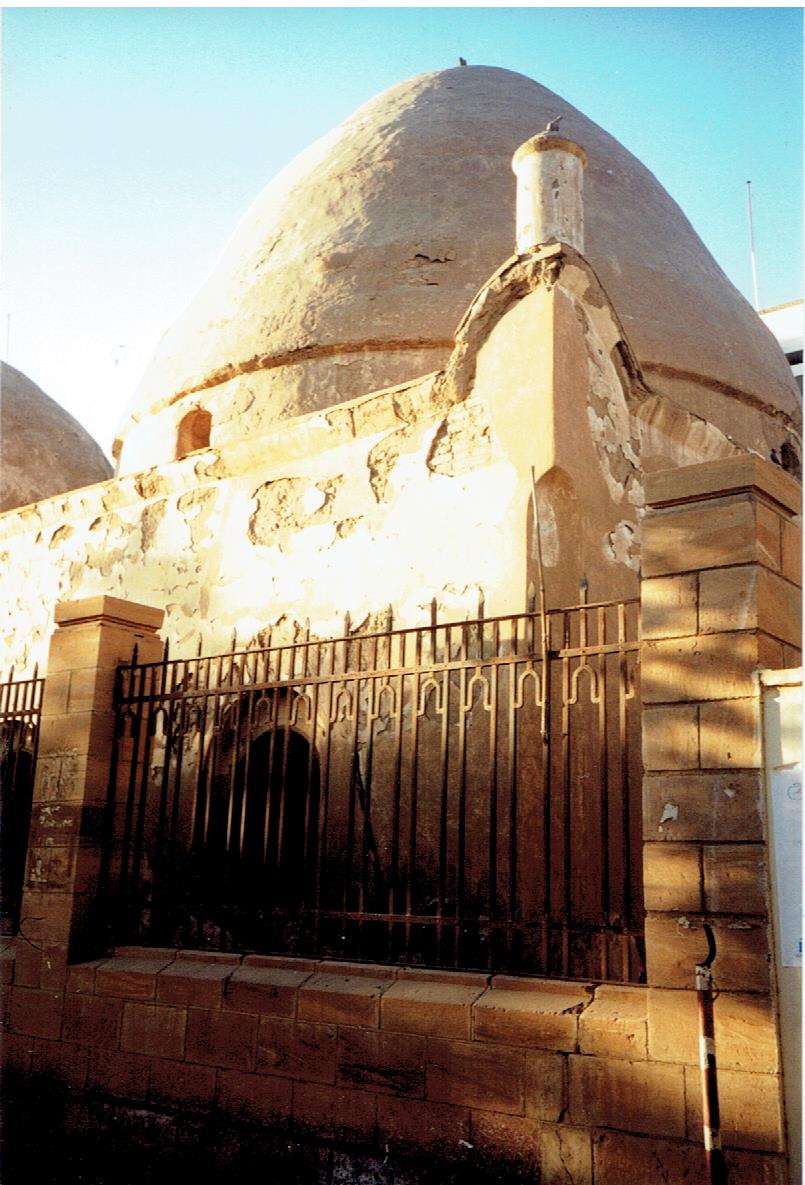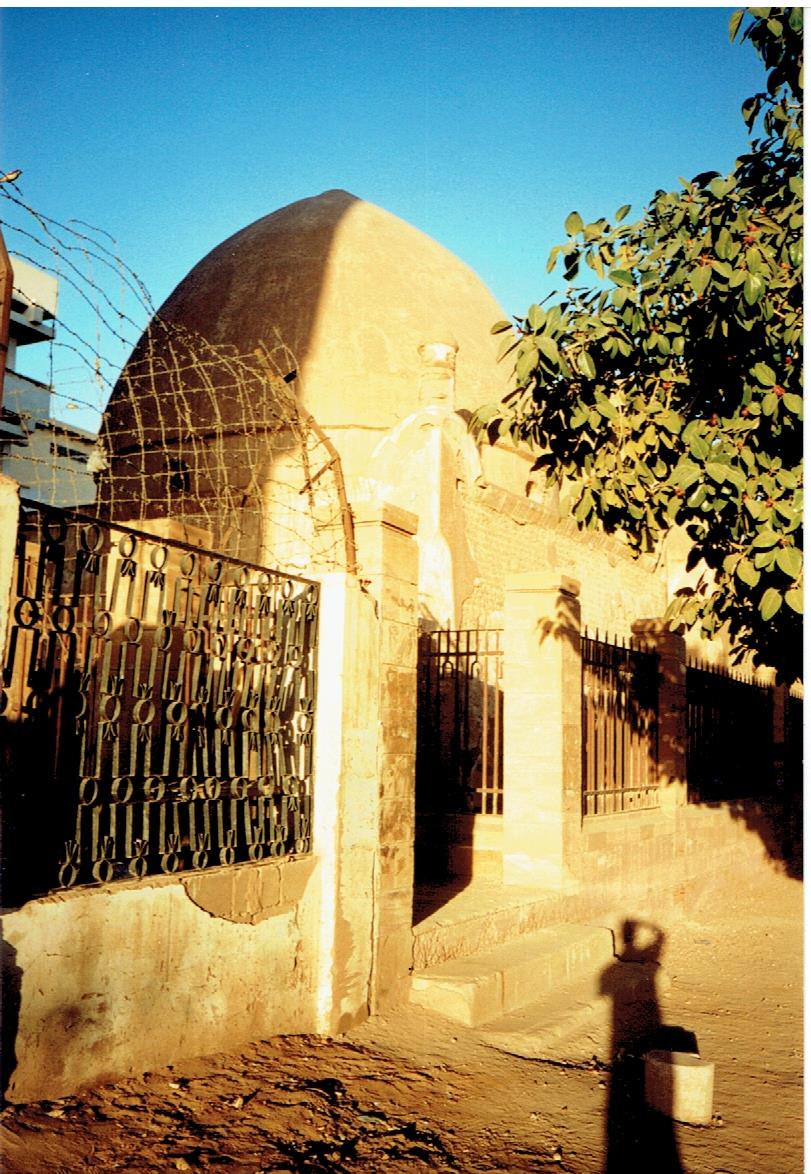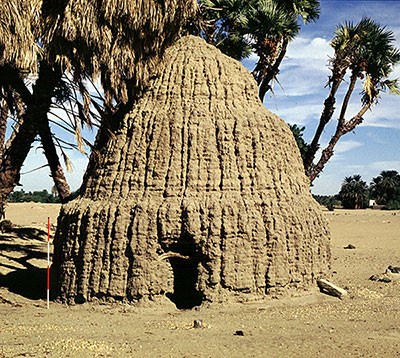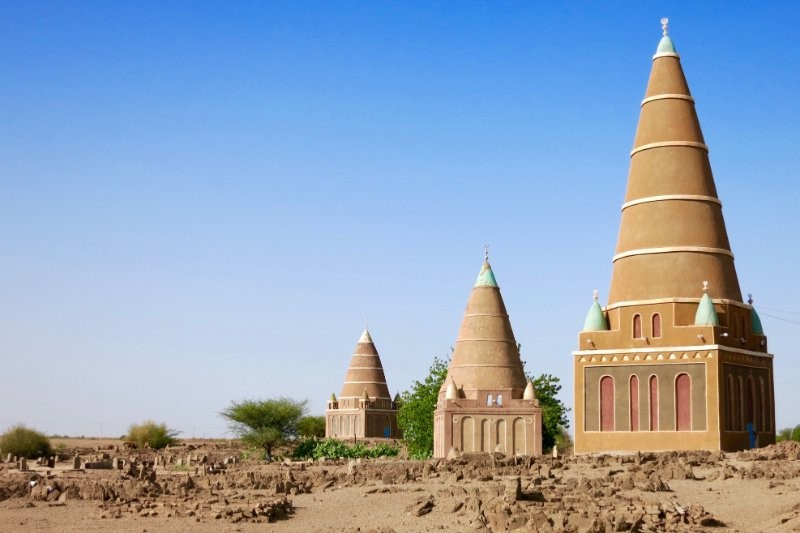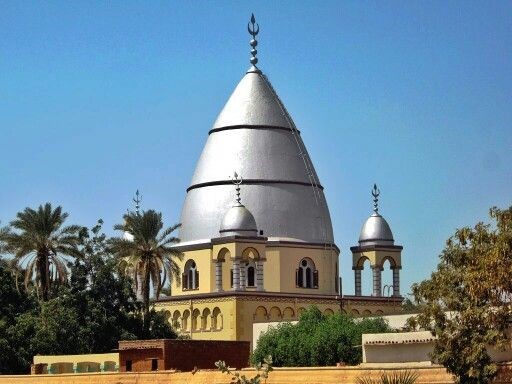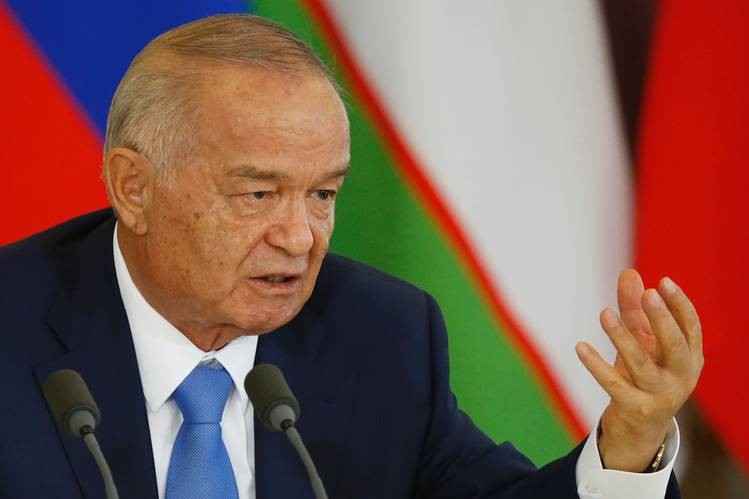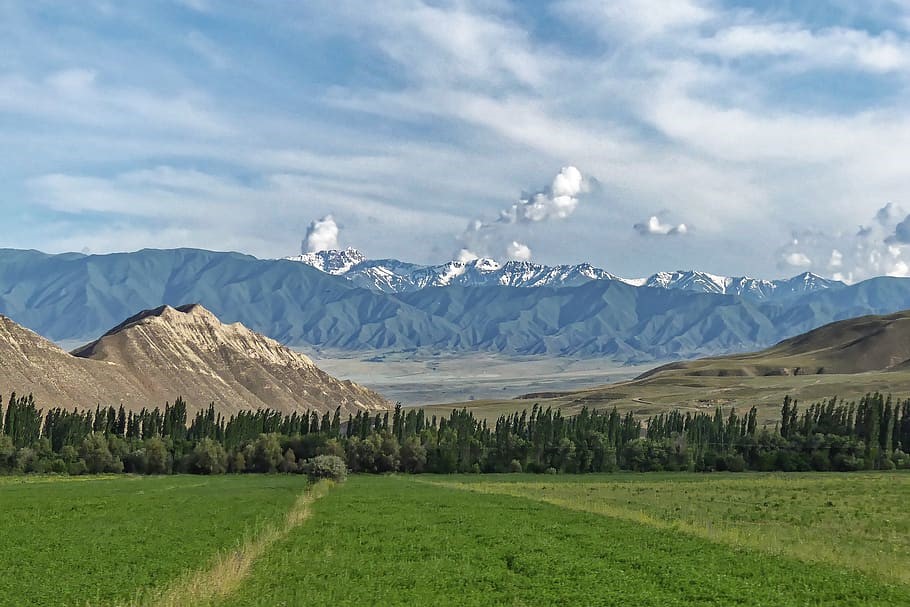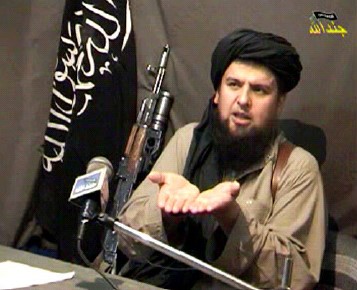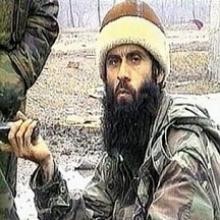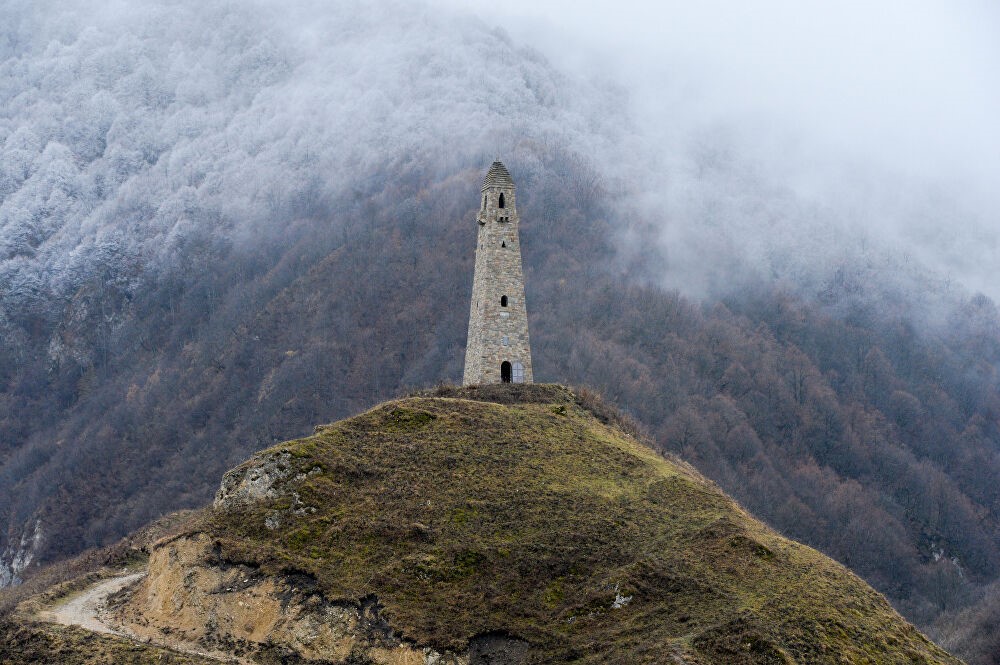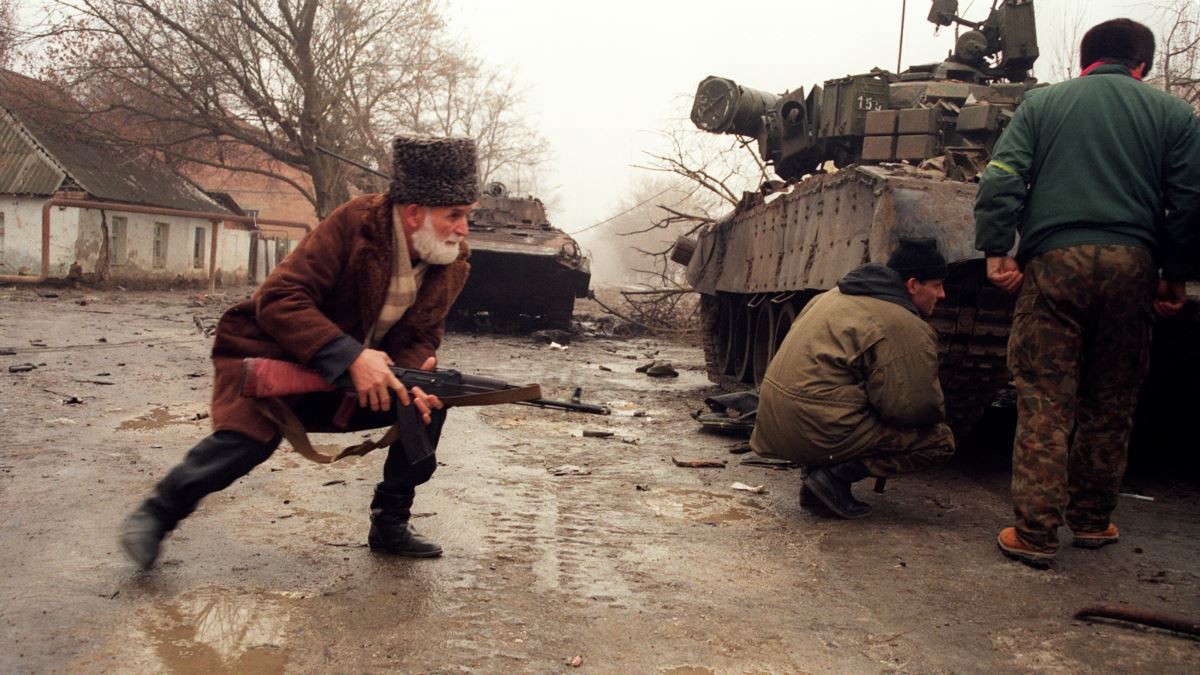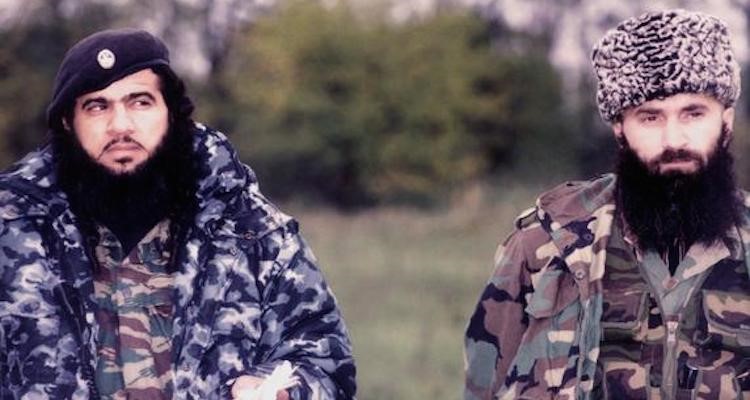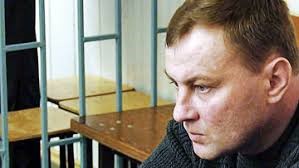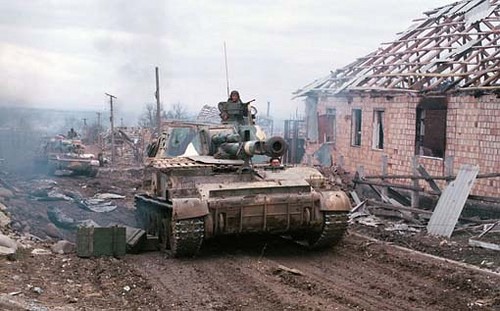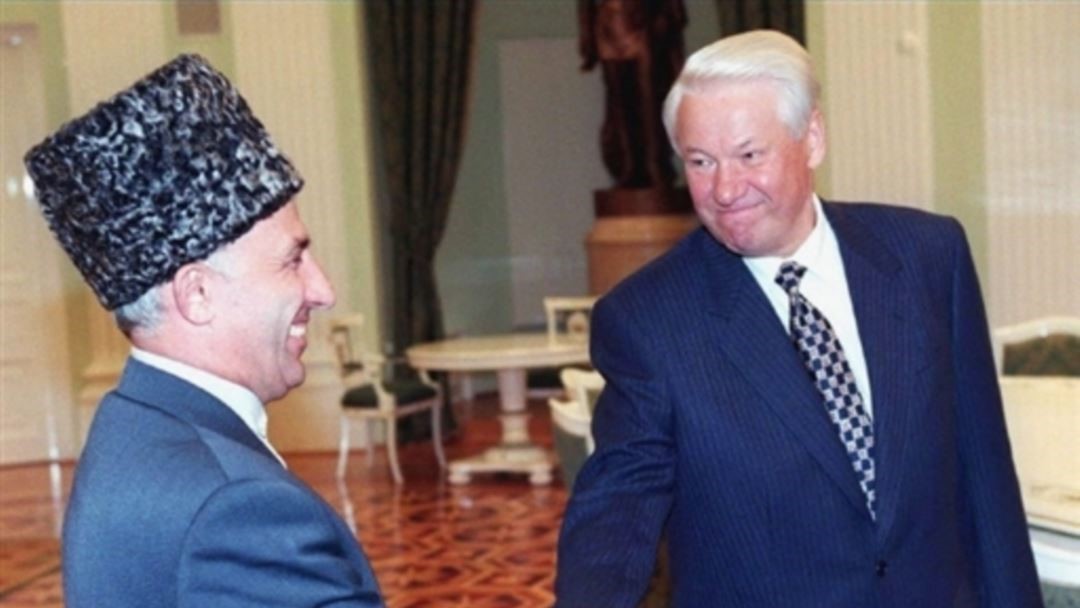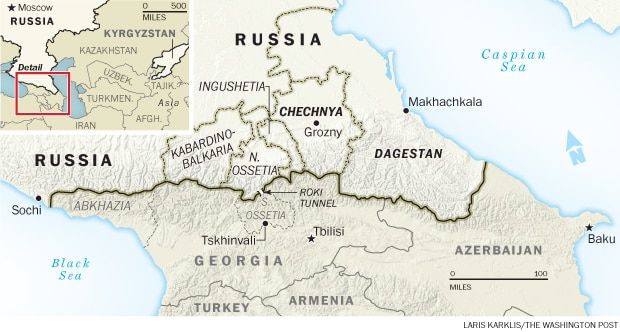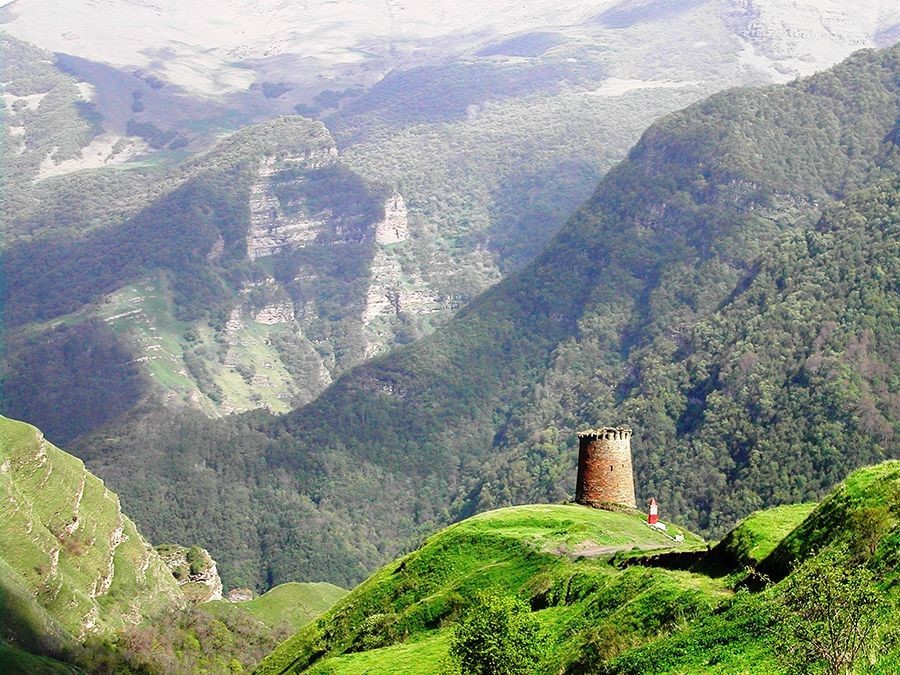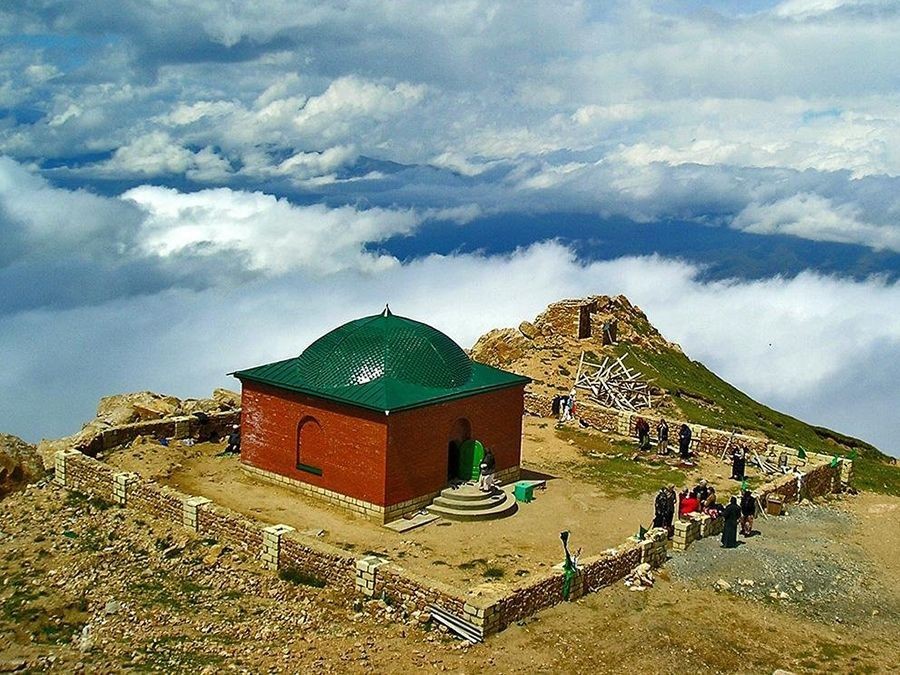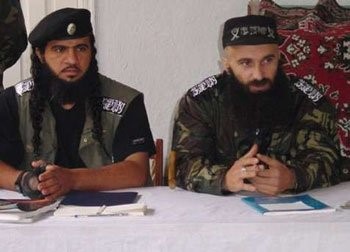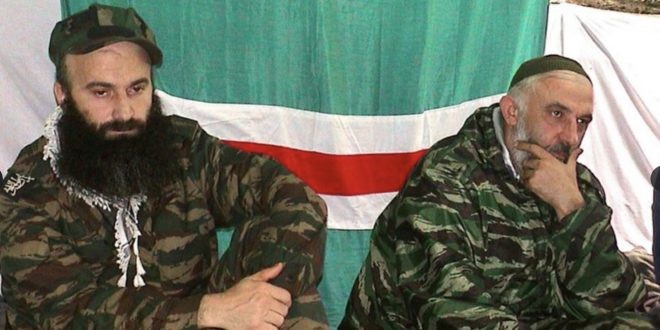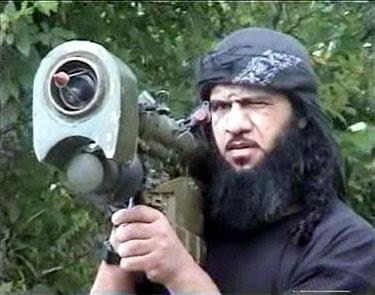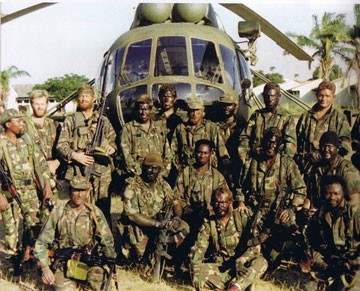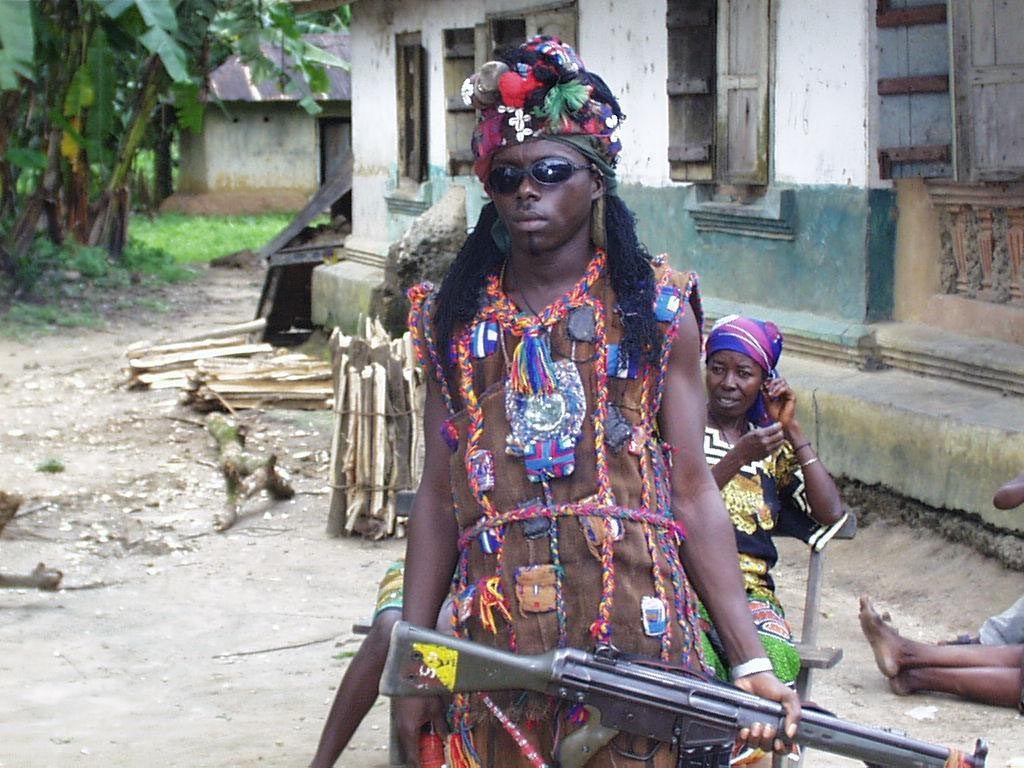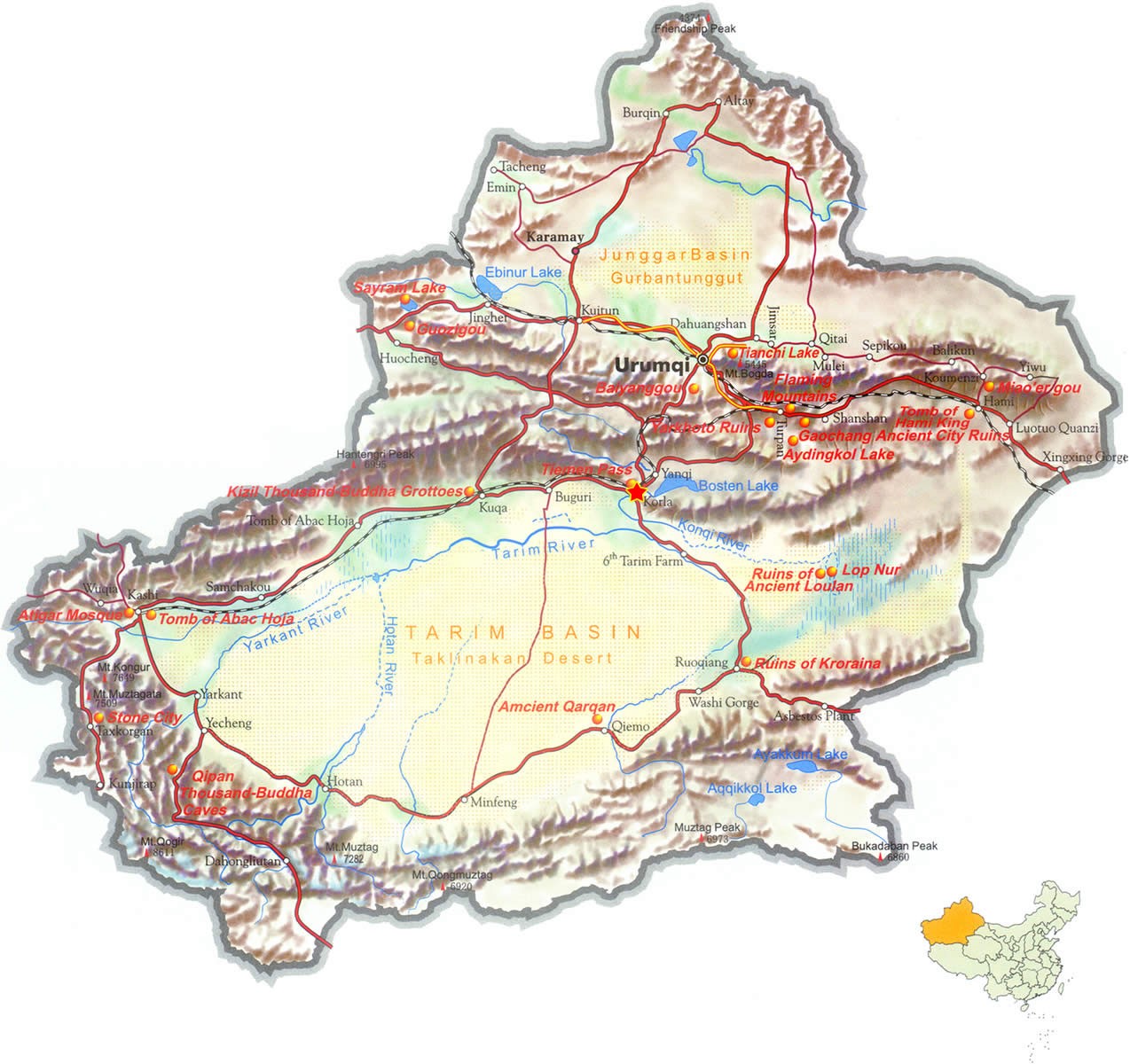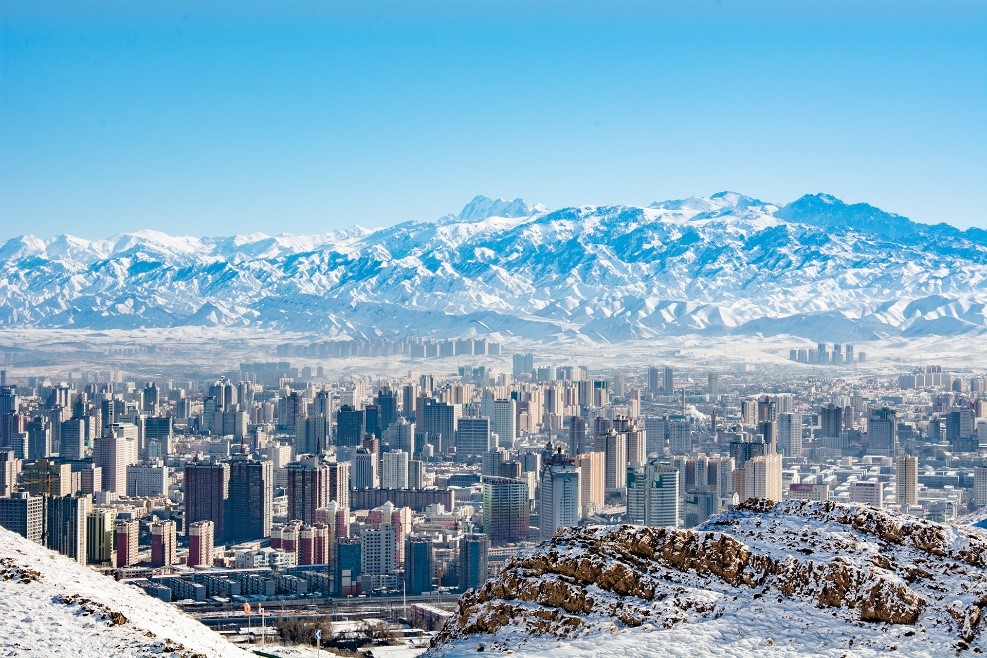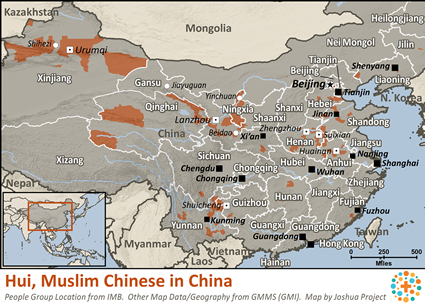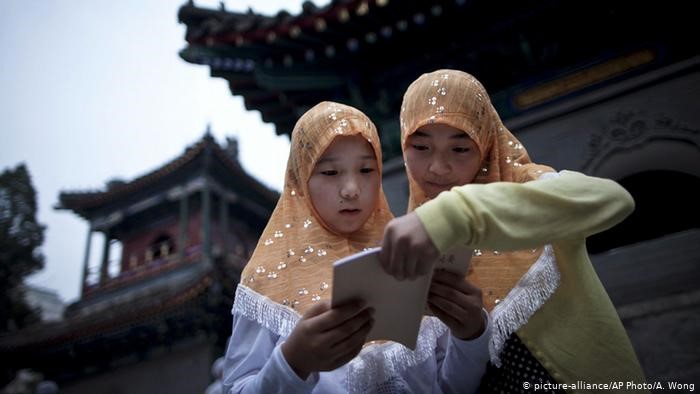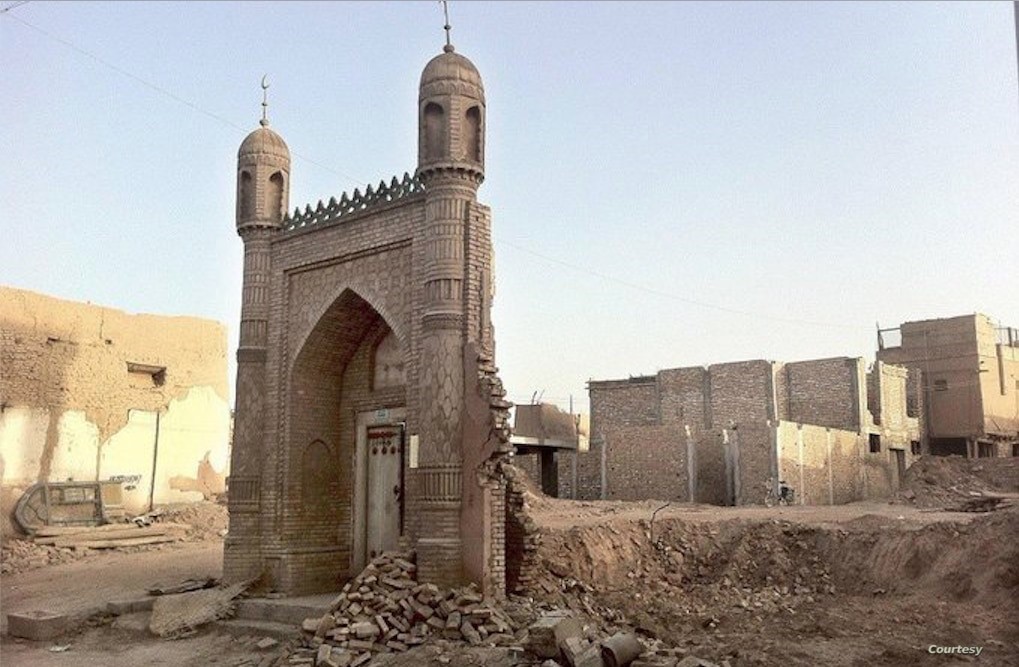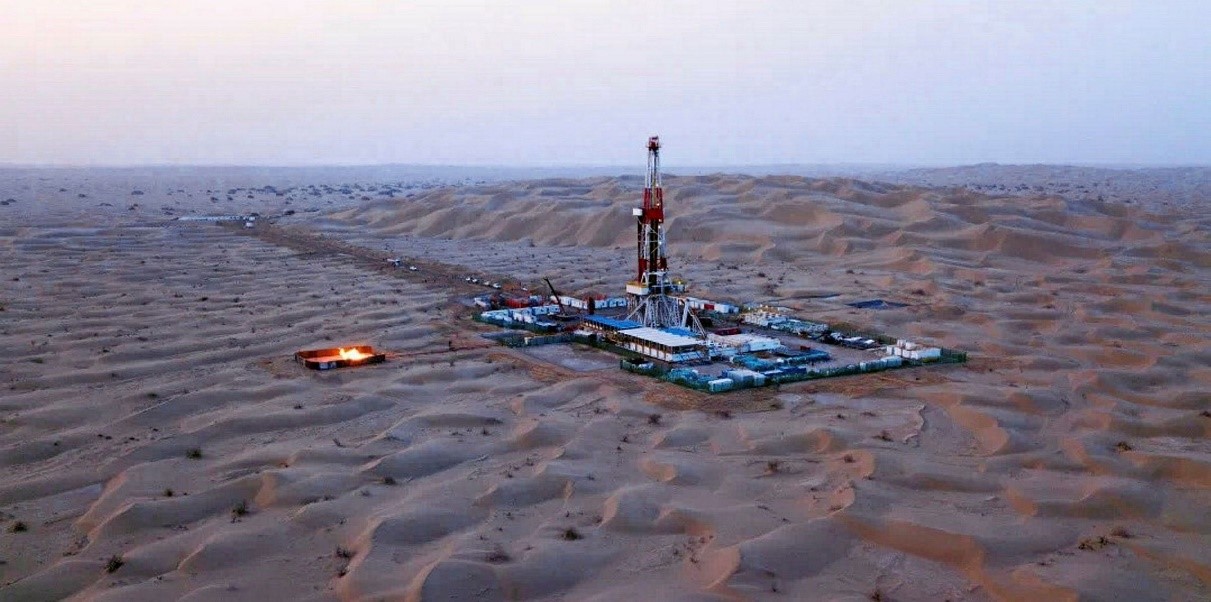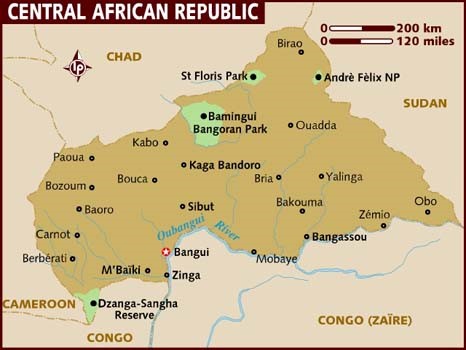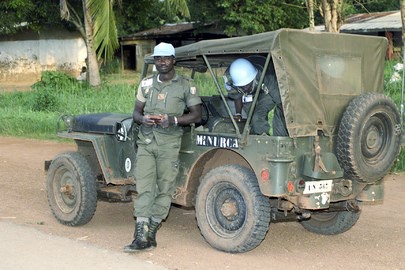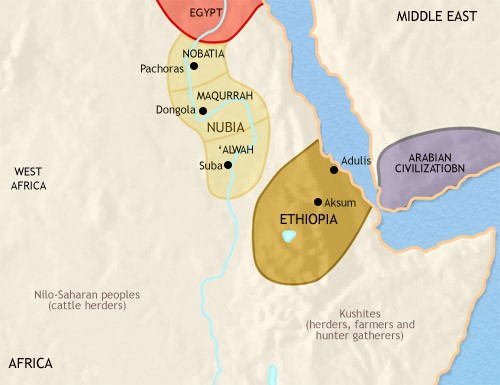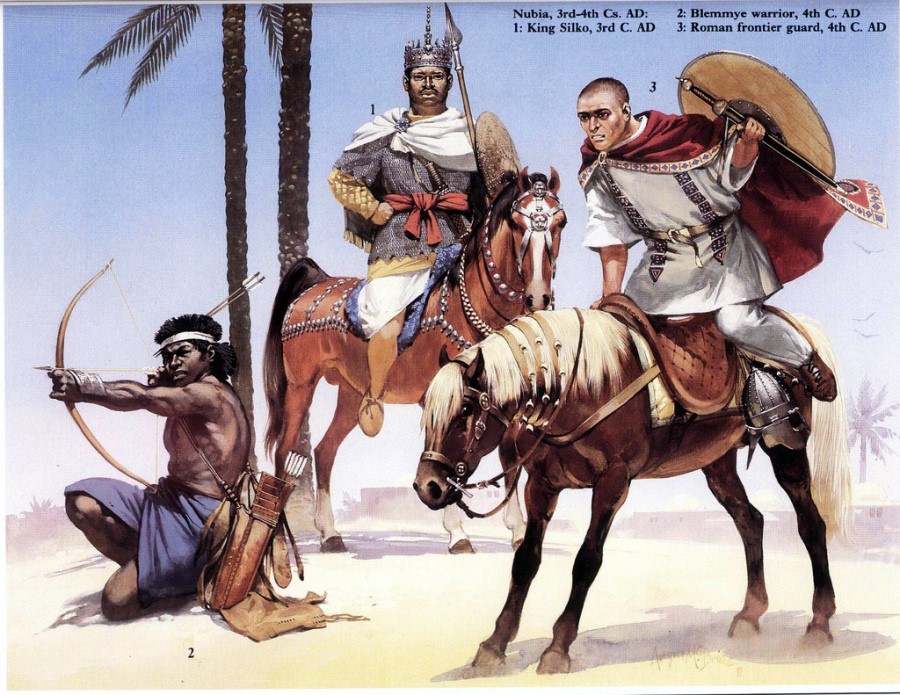McGregor, Andrew: Darfur in the Age of Stone Architecture c. AD 1000 – 1750: Problems in Historical Reconstruction, BAR International Series 1006, Cambridge Monographs in African Archaeology 53, 2001
Please note the names from the King-lists have not been included in the index.
Footnotes are indexed for content but not citations.
A
Aba Kuri: 96(fn.44)
Abalessa: 14, 14(fn.29)
‘Abbasids: 24, 25, 26(fn.39), 28(fn.65), 28(fn.65), 29(fn.73), 43, 48, 50, 50(fn.64), 51, 52, 55, 56, 128
‘Abd al-Gadir: 38,
‘Abd al-Karim, Sultan: 44, 45, 56, 77-78, 88
‘Abd al-Karim ibn Yame: 28(fn.65), 43
‘Abd al-Majid, Sultan: 44
‘Abd al-Qadir: 68
‘Abd al-Rahman al-Rashid, Sultan: 96, 96(fn.39)
‘Abdallahi ibn Muhammad al-Khalifa: 62(fn.38)
‘Abdallab Arabs: 50(fn.64), 126
‘Abdullah Gema’a (Jama’a): 126-127
‘Abdullah Wad Hasoba al-Moghrabi: 62(fn.36)
‘Abdullahi Bahur, King: 28
‘Abdullahi Kamteinye, Sultan: 30
Abéché: 45, 77
Abo: 96(fn.44)
Abraham: 36(fn.44)
Abtar: 128(fn.68)
Abu Asal: 88, 95
Abu Delayk: 117
Abu Deleig: 125(fn.37)
Abu al-Fida: 22(fn.4), 23, 52
Abu Garan: 118-119
Abu Hadid: 129, 130
Abu Hamed: 37(fn.46), 124
Abu Hamid al-Gharnati: 38
Abu Haraz: 124(fn.32)
Abu Kundi: 89
Abu’l-Malik: 55
Abu Negila: 116(fn.4)
Abu’l-Qasim: 89, 89(fn.28), 96
Abu Qona’an: 16, 74, 117, 122(fn.6), 123, 128-130, 128(fn.68), 132, 140
Abu Sufyan (Sofyan): 122-124, 127, 127(fn.51), 130, 131, 134
Abu Suruj: 21
Abu Telfan: 23(fn.18), 45, 77
Abu Urug: 125
Abu Zabad: 28
Abu Zayd: 49-52, 52-53, 85
Abu’l-Sakaring Dynasty: 50
Abunjedah: 54
Al-Abwab: 37, 37(fn.46), 129, 129(fn.78)
Abydos: 25
Abyssinia, Abyssinians: 26(fn.38), 38, 111(fn.12), 129, 129(fn.79)
Acien, Kwanyireth Bol: 75
Adams, William Y.: 68, 123, 132(fn.5), 134
Al-Adayk: 49
Addison, F.: 122
Adelberger, J.: 64(fn.57)
Adimo (Dimo): 75
Adindan: 68(fn.97)
Ador, King: 37, 129
‘Agab, King: 85
Agadez: 137
Agadez Chronicle: 130
Agathermerus: 16
Agumbulum: 130
Ahaggar: 13(fn.26)
Ahl al-Awaid: 86
Ahmad Adam: 36
Ahmad al-‘Abbasid: 50
Ahmad Arbaf, Faki: 35
Ahmad Bakr, Sultan: 88-89, 93(fn.10), 95, 96, 96(fn.44)
Ahmad al-Daj: 25, 26, 27, 27(fn.45), 28, 29, 30
Ahmad al-Dia: 29
Ahmad Hamid: 61, 62(fn.37)
Ahmad al-Kabgawi: 27
Ahmad Kanjar: 45
Ahmad al-Ma’qur: 10, 18, 44, 46(fn.31), 49-56, 50(fn.60), 84-85, 87, 112(fn.26), 139
Ahmad al-Turkan: 28
Aidhab: 65
Ainyumba Daifani: 116
Aïr: 113, 130, 137
Akec La, Queen: 75
Akurwa: 75(fn.2)
Alans: 36(fn.44)
Albanians: 74
Albinism: 129, 129(fn.86)
Alexander the Great: 29, 36-39, 36(fns.44-45), 37(fns.51-52),
Alexandria: 126(fn.44)
Algeria: 13-14, 20,
‘Ali, A. Muhammad: 9
‘Ali Ahmad: 119(fn.36)
‘Ali Dinar (Sultan): 4, 11, 11(fn.s 10, 11), 12, 34(fn.26), 34(fn.29), 35, 43(fn.3), 45(fn.23), 54, 57(fn.5), 62(fn.38), 69, 78(fn.14), 96, 96(fn.38), 96(fn.40), 116, 116(fn.1)
‘Ali Dunama: 72
‘Ali Ghaji Zeinama: 72
‘Ali ibn Ahmad, Sultan: 72
‘Ali Korkorat, Sultan: 59, 59(fn.15)
‘Ali Musa: 45
Almásy, László Ede: 127(fn.57)
Almohads: 52
Almoravids: 110(fn.1)
Alwa (Aloa): 37(fn.46), 62(fn.36), 122, 123, 126(fn.44), 127, 131
Ama Soultane: 77
‘Amara Dunqas: 126
Ambus Masalit: 78(fn.14)
Amdang: 86
Aminu, Muhammadu: 16
Ammon: 37, 37(fns.53-54), 38
Ammon (place-name): 128
Amsa, Queen: 72
Amun-Re: 37
Anakim: 128
‘Anaj (Anag, Anak): 48(fn.53), 117, 122, 122(fn.6), 123-131, 123(fn.12), 124(fn.32), 125(fns.37,38), 127(fns.57,58), 128(fns.60,68), 130(fn.92), 140
Andal: 29
Andalus: 48
Anderson, AR: 37(fn.50)
Anedj: 129
‘Angarib, Sultan: 26, 27
Anglo-Egyptian Condominium: 12, 13, 27, 27(fn.52), 62(fn.42), 79, 124
Ani, King: 129, 129(fn.77)
Annok: 36(fn.41)
Anthony: 13(fn.26)
Arab, Arabs: 17, 18, 24(fn.25), 26, 28(fn.65), 31(fn.5), 36(fn.44), 43(fn.6), 44, 44(fn.8), 45, 45(fn.23), 48, 49, 50(fn.60), 53(fn.90), 55, 56, 57(fn.2), 62, 63(fn.47), 72(fn.128), 87, 88(fn.18), 89, 111, 111(fns.11,12), 116, 117, 119, 125(fn.33), 125(fn.37), 126, 128(fn.68), 129, 130, 139
Arabia: 2, 26(fn.38), 27, 28(fn.65), 29(fn.73), 38, 50, 117, 135, 136
Arabic: 11(fn.11), 13, 44(fn.13), 63, 64(fn.54), 71(fn.119), 73(fn.142), 75(fn.7), 77(fn.9), 96(fn.41), 97, 104, 109, 110(fn.1), 111(fn.11), 117(fn.15), 140
Arari: 96(fn.41)
Arin Dulo: 31
Arkell, AJ: 1, 7-9, 12, 16, 20, 21, 23(fn.16), 25, 26, 27, 29(fn.69), 31, 31(fn.6), 33, 33(fn.18), 34, 34(fn.25), 34(fn.30), 36, 36(fn.39), 38, 38(fn.57), 44(fn.13), 45, 45(fn.21), 46, 46(fn.31, 32), 46(fn.35), 47, 48, 50, 53(fn.90), 54, 56, 57, 57(fn.1), 59(fn.9), 60, 60(fn.24), 61, 62, 62(fn.37), 63, 63(fn.49), 64, 64(fn.53), 65, 65(fn.67), 66-69, 68(fn.97), 69(fns.101,102), 70-71, 70(fn.111), 71(fn.118), 72, 72(fn.129), 74, 75, 75(fn.7), 78(fn.14), 91(fns.2,3,7), 93, 93(fn.8), 94, 94(fns.21,22,27), 95, 96(fns.39,41), 97, 97(fn.46), 112, 112(fn.21), 113, 115, 116, 116(fn.4), 117, 118, 122(fn.6), 123, 123(fn.13), 127, 128, 130(fn.96), 132, 134
Arianism: 137
Arlas: 128(fn.68)
Armenia, Armenians: 52(fn.79)
Armi Kowamin: 64(fn.53)
Ary: 129
Asben: 130
Ashdod: 128
Ashmolean: 65
Assyrian: 8, 28(fn.65)
Aswan: 110, 116, 137
Asyut: 5, 125
Atbara: 88, 116, 131
Aule: 63
Aurès: 20
Aurungide Dynasty: 116
Awlad Mahmud: 130
Awlad Rashid: 72(fn.128)
Awlad Sulayman: 44, 63(fn.47)
Axum: 113
Ayesha: 55
‘Ayn Farah: 33, 36(fn.39), 54(fn.99), 56, 57(fn.5), 61, 64-74, 64(fn.60), 65(fn.67), 66(fn.75), 67(fn.86), 69(fn.100), 69(fn.102), 91(fn.3), 112, 122, 127, 131, 132, 134, 137, 139
‘Ayn Galakka: 55, 66(fn,75), 73-74, 73(fns.146,148), 128(fn.68)
‘Ayn Siro: 60(fn.23)
‘Ayn Sirra: 72(fn.129)
Ayyubid: 23
Axum, Axumites: 8
Azagarfa: 96(fn.41)
Al-Aziz, Caliph: 52(fn.79)
B
Babaliya: 48,
Babylon: 22
Bachwezi: 18
Bacquié, Captain: 134
Badanga Fur: 71
Badar: 136
Badi, Sultan: 87
Badr al-Gamali al-Guyushi: 52(fn.79)
Bagari: 116
Baghdad: 50, 52
Bagirmi: 5, 7, 27(fn.55), 43, 62, 63, 75(fn.3), 88, 95, 111, 111(fn.11), 119, 135
Bagnold, RA: 116
Bahar: 91
Baheir Tageru: 125
Bahnasa: 43(fn.6)
Bahr, Wazir: 89
Bahr al-Arab: 27(fn.55), 75
Bahr al-Ghazal (Chad): 67(fn.86), 73, 74, 132-135, 132(fn.1)
Bahr al-Ghazal (South Sudan): 23, 25, 27(fn.45), 27(fn.55), 29, 31(fn.5), 33(fn.12), 75, 128(fn.68), 132(fn.1)
Bahr al-Jamal: 56
Baiyuda Wells: 124
Balal: 111(fn.11)
Balfour Paul, HG: 1, 8(fn.19), 17, 20, 26-27, 28, 31, 35, 36(fn.41), 38(fn.60), 44, 60, 60(fn.24), 61, 61(fn.29), 62, 65, 66, 66(fns.75,77), 68(fn.92), 69, 70, 72, 95
Banda: 7, 27(fn.55)
Bani Abbas: 48
Bani Habibi: 16
Bani Mukhtar: 16
Bantu: 27(fn.55)
Banu Hillal: 44, 46(fn.31), 48, 48(fn.53), 49, 51, 51(fn.71), 52, 52(fns.79, 80), 52(fn.86), 53, 57(fn.2), 85, 117, 120(fn.46), 129
Banu Sulaym: 52, 52(fn.79)
Banu Ummaya: 64(fn.53)
Bao: 49
Baqqara: 24, 27(fn.55), 44, 50(fn.60)
Barah (Bazah): 129
Barakandi: 31(fn.6)
Barani Berbers: 128(fn.68)
Barboteu, Lieutenant: 48
Barca: 64
Bargala: 57(fn.1)
Bariat: 55
Barkindo, BM: 46, 46(fn.30), 47, 111(fn.12), 136, 136(fn.32), 137, 137(fn.41)
Barqat Umm Balbat: 124
Barquq, Sultan: 111(fn.12)
Barr: 128(fn.68)
Barr ibn Qays ‘Aylan: 38
Barra, Battle of: 54
Barrjo: 31(fn.4), 128(fn.68)
Barth, Heinrich: 5, 43, 43(fn.6), 46, 46(fn.27), 57(fn.2), 111
Basa: 129(fn.78)
Basi: 28(fn.60)
Basigna: 119(fn.37)
Batálesa: 43, 43(fn.6)
Batnan, King: 85
Bayko: 23, 23(fns.17, 19), 25, 25(fn.29), 27(fn.45), 29, 88
Bayko King-List: 42
Bayt al-Mayram: 61, 69, 69(fn.102)
Bazina à degrès: 20, 20(fn. 22), 118(fn.27)
Beaton, AC: 16, 87, 87(fn.9)
Bedariya: 128
Bedde: 63
Befal: 129
Beja: 22, 132
Beliin: 137
Bell, Herman: 130(fn.92)
Bender, Lionel M.: 6, 23, 119(fn.34), 128(fn.60)
Bénesé: 43, 43(fn.6)
Benghazi: 77(fn.1)
Beni – see Bani
Benoit Pierre: 13, 13(fn.26)
Berber, Berbers: 7, 13, 14, 14(fn.29), 16, 17, 17(fn.15), 20, 21, 25, 26, 33, 36(fn.44), 38, 45(fn.25), 46, 46(fn.27, 30, 31), 48, 48(fn.53), 49, 52, 53, 53(fn.90), 57(fn.2), 61(fn.31), 62, 64(fn.53), 70, 72(fn.129), 77, 80(fn.2), 111(fns.11,12), 119, 122, 122(fn.6), 123, 125, 125(fn.33), 128, 128(fn.68), 129, 130, 130(fn.93), 137, 139
Beri: 23
Beringia, Battle of: 45(fn.23), 62(fn.42)
Berre, Henri: 24, 25
Berti: 33, 64, 116, 118-119, 119(fn.34), 120(fn.44)
Bayuda Desert: 125
Bible: 37(fn.52), 128
Bidayat: 27, 48, 48(fns.53, 54), 49, 49(fn.55), 72(fn.128), 117, 128(fn.68), 137
Bidayriya Arabs: 88(fn.18)
Bilaq: 33, 33(fn.22)
Bilia Bidayat: 137
Bilia Bidayat, Sections: 48
Bilma: 46
Biltine: 45
Binga: 7, 27(fn.55)
Bir Bai Depression: 77
Bir Natrun: 22(fn.1)
Birged (Birked): 51, 51(fn.71), 64, 64(fn.54), 88, 120, 120(fn.46)
Birged Sections: 120(fn.46)
Biriara Bidayat, Sections: 49
Birni: 56, 72(fn.134)
Bivar, AH: 11, 67(fn.86), 73(fn.144), 74
Blemmyes: 127(fn.58)
Blue Nile, Blue Nile Province: 7, 62(fn.36), 117
Bochianga: 132, 132(fn.7)
Bora Dulu: 9
Bordeaux, General: 73(fn.146)
Borgu: 135, 136
Borku: 44, 66(fn.75), 73, 74, 77(fn.1), 128, 132(fn.4), 137
Borno (Bornu): 5, 7, 11, 16, 16(fns. 4,7), 26(fn.39), 28, 28(fn.65), 29(fn.73), 36(fn.44), 44, 46, 46(fn.27), 47, 47(fn.43), 48, 50, 50(fn.64), 51, 54, 57(fn.2), 63, 69(fn.101), 70, 70(fns.111,116), 71, 72-73, 72(fns.129,135), 74, 75, 75(fn.3), 77(fn.1), 80(fn.1), 88, 91, 110, 111, 111(fns.11.12), 112, 118, 119, 123, 127, 131, 137, 139
Bosnians: 74
Botolo Muhammad: 119(fn.36)
Brahim (Sultan): 44
Brands: 25, 46(fn.37), 70, 70(fn.107), 72(fn.129)
Braziers: 134
Brett, Michael: 52
Bricks, Brick Construction: 65(fn.67), 66, 66(fn.75), 67(fn.86), 70(fn.109), 72-73, 73(fns.142,143,144,148), 74, 95, 96, 114, 122, 124, 126, 127, 132
Britain, British: 11(fn.10), 13, 45(fn.23), 62(fn.42), 65(fn.67)
British Columbia: 15
Brown, Robert: 111
Browne, WG: 5, 46(fn.37), 114, 130
Bruce, James: 38(fn.58), 89(fn.28)
Brun-Rollet: 52
Buba: 15
Budge, EA Wallis: 127(fn.58)
Bugiha: 137(fn.37)
Bugur, King: 29, 31
Bukar Aji: 136(fn.32)
Bulala: 44, 48, 56, 67(fn.86), 70, 73, 73(fn.143), 110, 111, 111(fn.11), 112, 112(fn.21), 137
Bulgi: 57(fn.1)
Burgu Keli: 57(fn.1)
Burnus: 128(fn.68)
Burundi: 115
Busa: 135
Bussa: 136
Butana: 130
Butr Berbers: 128(fn.68)
Byzacena: 137
Byzantium, Byzantines: 43(fn.6), 135, 135(fn.21), 137
C
C-Group: 45(fn.21), 132(fn.7), 134
Cailliaud, Frèdèric: 38, 46(fn.37)
Cain: 128
Cairo: 11(fn.9), 52, 52(fn.79), 63, 64, 78(fn.15), 111, 111(fn.12)
Cameroon: 5, 115, 136(fn.32)
Campbell, E.: 60
Canaanites: 128, 128(fn.68), 132
Canary Islands: 37, 130, 37, 130(fn.93)
Cannibalism: 78(fn.14)
Capot-Rey, MR: 132(fn.5)
Carbou, H: 27(fn.54), 44(fn.8), 46(fn.32), 53, 80(fn.1), 111-112
Carrique, Captain: 73-74, 128(fn.68)
Carthage, Carthaginians: 14, 115, 137
Caucasus: 35, 36(fn.44)
Celts: 36(fn.44)
Central African Republic: 27(fn.55)
Chad: 7, 17, 22, 23, 27(fns.54,55), 31(fn.5), 44, 44(fn.13), 45, 48(fn.51), 66(fn.75), 67(fn.86), 72, 111(fn.9), 112, 113, 114, 132-137, 132(fn.7), 140
Changalif: 45
Chapelle, Jean: 44, 48
Chittick, HN: 125-127
Chokhorgyal Monastery: 35
Chosroe II (Chosroes, Khosraw, Kisra): 26(fn.38), 135, 135(fn.25)
Chouchet Tomb: 14, 14(fn.27), 20, 20(fn.21), 77, 118, 118(fn.27), 119, 119(fns.40,41,42)
Christianity, Christians: 8, 11, 23, 33, 36(fn.44), 38, 44(fn.13), 46, 46(fn.31), 46(fn.35), 46(fn.37), 47, 46(fn.37), 62(fn.36), 64(fn.54), 65(fn.67), 66, 67, 67(fn.86), 68-69, 69(fn.102), 70, 72(fn.129), 74, 110, 111, 112, 116, 117, 120, 120(fn.48), 122-123, 124(fn.29), 125-127, 126(fn.44), 130, 131, 132-137, 132(fns.4,6), 137(fn.41), 139-140
Chronicle of John: 137
Circassians: 74
Clapperton, H: 110(fn.3)
Clarke, Somers: 68
Cleopatra: 13(fn.26)
Cline, Walter: 48(fn.47)
Cohanim: 15
Cohen, Ronald: 11
Congo: 27(fn.55), 33(fn.12)
Copts (Egyptian): 111, 112, 123, 126(fn.44), 132, 135
Crawford, WF: 27, 38(fn.58), 123, 123(fn.13)
Crete: 38(fn.58)
Cromlech: 31(fn.10)
Crowfoot, JW: 130
Cunnison, I: 24
Cuoq, Joseph M.: 77(fn.9)
Currie, James: 46(fn.37)
Cyrenaïca: 37, 64, 77, 117
Cyrus the Great: 37(fn.52)
D
Dagio: 63
Dahia: 29
Daima: 114
Daju: 5, 6, 6(fn.6), 8, 12, 16, 18, 22-42, 22(fn.44), 23(fns.15, 16, 18, 19), 24(fn.21), 27(fn.45), 27(fn.52), 27(fn.54), 28(fn.58), 29, 29(fn.66-67, 71-72), 30, 30(fn.75,77), 31-42, 31(fn.6), 33, 33(fn.18), 34, 34(fn.25), 34(fn.29), 35, 36, 36(fn.45), 43, 44, 45, 51, 53(fn.98), 64, 64(fns.54,60), 72(fn.128), 75(fn.3), 87(fn.9), 91, 110, 112, 118, 118(fn.19), 128, 131, 139-140
Daju Hills: 27, 34, 113(fn.1)
Daju King-Lists: 40-42
Daju Sections: 24
Dak, son of Nyikango: 75
Dakin al-Funjawi: 88(fn.18)
Dakka: 116
Dala Afno (Dali Afnu, Afuno): 44, 70, 75, 91
Dala Gumami, Mai: 72
Dalatawa: 44
Dali: 31, 51, 54, 62-63, 71, 71(fn.118), 75, 75(fn.7), 76, 84, 87, 91, 93, 93(fn.10), 97(fn.45), 112(fn.26), 139
Dalloni, M: 119(fn.42), 130
Damergu: 47, 47(fn.46)
Danagla: 117
D’Anania, Giovanni Lorenzo: 63-64, 71
Danat, King: 29
Daoud al-Mireim, Sultan: 45
Dar Abo Dima: 51, 128
Dar Abo Uma: 51
Dar Birked: 89
Dar Dali (Daali): 62(fn.42), 75(fn.7)
Dar Dima: 75(fn.7)
Dar Erenga: 36(fn.41)
Dar Fertit (Fartit): 29, 112(fn.24)
Dar Fia: 87, 95
Dar Fur (see Darfur)
Dar Furnung: 43, 54, 64, 64(fn.60), 70, 72, 72(fn.129), 75, 86, 139
Dar al-Gharb: 75(fn.7)
Dar Hamid: 119
Dar Hawawir: 125
Dar Humr: 50, 50(fn.61)
Dar Kerne: 95
Dar Kobbé: 27(fn.45), 28(fn.65), 34(fn.25)
Dar Masalit: 30, 36(fn.41), 78(fn.14), 86
Dar Qimr (Gimr): 34(fn.25), 36(fn.41), 44, 45, 95
Dar al-Riah: 75(fn.7)
Dar Runga: 62(fn.42)
Dar Sila: 6(fn.6), 12, 23, 23(fn.18), 24, 25, 26, 27, 28, 29, 29(fn.72), 30, 34(fn.25), 36(fn.41), 45, 56
Dar Simiat: 33
Dar Sinyar: 44
Dar Tama: 27, 27(fn.45), 29(fn.72), 45, 79
Dar Tokonyawi: 75(fn.7)
Dar Tuar: 50, 34(fn.25), 50
Dar Uma: 75(fn.7)
Dar Wona: 29, 31, 93, 93(fn.10)
Dar Zaghawa: 33(fn.18), 50, 64(fn.53), 112, 112(fn.24)
Dar Ziyad: 44
Daranga Fur: 78(fn.14)
Darb al-Arba’in: 4, 5, 50, 60, 110, 112, 112(fn.25), 122(fn.6)
Dardai: 47, 47(fn.46), 48, 48(fn.51)
Darfur, Administrative Divisions: 75(fn.7)
Darfur, Geography of: 2-4
Darfur, Trade Routes: 4, 73, 77(fn.1)
Darsala: 47, 47(fn.46)
Date Palm Cultivation: 36, 48, 80(fn.2),
Daud Kubara ibn Sulayman: 129
Da’ud al-Mirayn: 77
Dawa: 57
Dawurd al-Miriri al-Modaddan, Sultan: 55
Daza Tubu: 16, 16(5), 34(fn.29), 45, 47, 137
Dazaga (Dazagada): 44(fn.13), 45
De Breuvery, J: 30, 50
De Cadalvène, E: 30, 50
De Lauture, PHS D’Escrayac: 87
De Medeiros, F.: 17
De Neufville, RL: 65, 65(fn.61), 66(fns.74,75), 67(fn.87), 68, 69(fn.100)
Debba: 31, 31(fn.4)
Debeira East: 67
Debeira West: 65, 65(fn.67)
Delil Bahar: 51, 63
Demagherim: 46(fn.27), 54
Dengkur: 34(fn.26)
Denham, D.: 72, 110(fn.3)
Derdekishia: 47-48
Dereiba Lakes: 34-36
Derihurti: 47
Dhu’l-Adh’ar: 39
Dhu al-Manar: 38
Dhu Nowas: 136
Dhu al-Qarnayn (see Alexander the Great)
Diab, Sultan: 45
Diffinarti: 68
Diffusionism: 8
Dilling: 75
Al-Dimashqi: 123
Al-Dinawari: 37
Dingwall, RG: 63, 65
Dinka: 128
Dionysus: 37(fn.50), 38
Dirku: 16
Dirma: 57
Divine Kingship: 35, 113, 139
Diyab: 49
Djelil al-Hilali: 84(fn.3), 85
Djourab: 132
Dolmens: 118(fn.27)
Donatism: 137
Dongola: 23, 43, 52(fn.86), 67(fn.86), 85, 117, 122(fn.6), 123, 129, 134
Dowda: 57, 57(fns.1-2), 60
Drums (see Nahas)
Dukkume, Malik: 87
Dulo Kuri: 57, 91-93
Dumont, Henri J.: 60(fn.18), 118-120
Dumua: 64(fn.60)
Durma: 57(fn.5)
Duros: 47
E
Edmonds, JM: 123, 125
Edwards, WN: 116(fn.1)
Egypt, Egyptians: 5, 7, 8, 11, 25, 33(fn.22), 38, 43, 52, 52(fn.79), 53, 54, 60, 63, 63(fn.47), 64, 71, 74, 88, 97, 110, 111(fn.12), 112, 112(fn.25), 113, 122(fn.6), 123, 123(fn.16), 125, 127, 128, 128(fn.67), 129, 131, 132, 134, 135
Eilai: 125
England, English: 54
Ennedi: 8, 27, 36(fn.39), 44, 44(fn.15), 46, 48(fn.54), 55, 77, 128, 128(fn.68), 137
Eparch: 38(fn.59)
Equatoria: 33(fn.12)
Erenga: 36(fn.41), 79
Errè: 45
Et-Terge Masalit: 78(fn.14)
Ethiopia: 37, 128(fn.68)
Eunuchs: 20, 57(fn.2), 62, 62(fn.42), 76
Evans-Pritchard, EE: 7, 75(fn.2)
F
Fara: 54
Faragab: 129
Farafra Oasis: 52(fn.80)
Faras: 38, 67, 69
Fashir: 75(fn.3), 89
Al-Fashir: 5, 9, 11, 11(fn.9), 34(fn.26), 45, 45(fn.23), 50, 62(fn.38), 63(fn.47), 69, 75(fn.3), 78(fn.14), 120(fn.46), 135
Fatimids: 52, 52(fn.79)
Fazughli: 27, 38, 128
Fazzan (Fezzan): 5, 20(fn.22), 45(fn.23), 48, 48(fn.51), 119(fn.41)
Felkin, RW: 34, 86, 87(fn.9), 114
Fella (Fellanga): 64(fn.60), 70
Fenikang: 75(fn.2)
Fentress, Elizabeth: 52
Ferti: 20
Fertit: 27, 27(fn.55), 30
Fez: 62(fn.36)
Fezzan (Fazzan): 63(fn.47), 73, 74, 119
Fiki Khalil: 54
Fiki Muhammad Tahir: 62(fn.38)
Fileil, Sultan: 30
Filga: 59, 94, 95
Fir: 27(fn.55)
Fira: 64(fn.53)
Firat: 27(fn.55)
Fisher, AGB: 111(fn.11), 112, 112(fn.26)
Fora: 51
Forang Aba: 71
Foranga Fur: 71
Forei: 95
Foucauld, Pére: 13
France, French: 13, 30, 30(fn.78), 34(fn.29), 48(fn.51), 63(fn.47), 65(fn.67), 73(fn.146)
Franciscans: 137
Frobenius, Leo: 135
Fuchs, P.: 72(fn.128)
Fugbu (Fugobo): 80(fn.3)
Fulani: 36(fn.44), 72, 119
Funj: 24(fns.21, 25), 25, 31(fn.4), 38, 38(fn.57), 51, 87, 88(fn.18), 89, 95, 112, 126, 128(fn.60), 129, 131
Funj Chronicle: 51, 126, 126(fn.44), 127, 131
Fur: 6-7, 11, 16, 17, 18, 27(fn.55), 28, 29(fn.71), 30, 31, 33, 34, 34(fn.25), 36, 45, 45(fn.18), 51, 53, 55, 57, 57(fn.2), 62, 64, 64(fns.53,54), 71, 71(fns.120,123), 75, 78(fn.14), 79, 86-109, 86(fn.7), 91(fn.5), 123, 139
Fur King-Lists: 97-109
Fur Language: 86, 86(fn.2), 94(fn.22)
Furnung Hills: 60, 60(fn.23), 119(fn.38)
Furogé (Feroge): 27, 27(fn.55), 29(fn.73), 30
G
Ga’afir Gurmun (Germun), King: 85
Gabir: 64
Gabri: 20
Gaéda: 44, 44(fn.15)
Gamburu: 69(fn.101), 72-73
Gami Kheir, Malik: 116(fn.1), 118
Gao: 110(fn.1)
Gaoga: 33, 110-112, 110(fn.1), 112(fns.21,24,26)
Garamentes: 115, 130
Garoumélé: 73, 73(fn.143)
Garu: 72(fn.135)
Gedaref: 50
Garstang, John: 62
Gath: 128
Gaya: 136(fn.32)
Gaza: 128
Gelti al-Naga: 130(fn.94)
Genealogy: 5, 11(fn.11), 12-15, 24, 47(fn.46), 53(fn.91), 84, 96(fn.41), 97, 111(fn.12), 128(fn.68)
Geneina: 86
Genies (Jinn): 62(fn.38)
German: 64(fn.57)
Gezira: 129(fn.78)
Ghabashat, Battle of: 89
Ghana: 22, 135
Gharbanin: 25(fn.29)
Ghazali: 67, 134
Ghudiyat Arabs: 87
Ghulam Allah ibn ‘Ayd: 28(fn.65)
Ghumsa: 46
Ghuzz: 74
Giants: 31(fn.4), 53-54, 73, 74, 123, 128, 128(fn.68)
Giggeri, Sultan: 88, 95
Gilgamesh: 37, 37(fn.50)
Gili: 78
Gillan, Angus: 7, 35, 35(fn.34)
Gillif Hills: 125
Gillo: 75
Ginsi: 87
Gitar, King: 28
Gitxsan: 15
Glass: 65-66, 65(fn.67)
Gnol: 23(fn.15)
Gobir: 135
Gog and Magog: 36, 36(fn.44)
Gogorma: 95
Gold: 71
Gordon-Alexander, LD: 96(fn.40)
Goths: 36(fn.44)
Greece, Greek: 7, 28(fn.65), 37, 38, 65(fn.67), 126(fn.44), 132, 135(fn.25), 137
Gros, René: 29, 44(fn.17)
Guanche: 130(fn.93)
Gula: 27(fn.55)
Gule: 128(fn.60)
Gunda: 47(fn.46)
Gura’an (Kura’an): 25, 34(fn.29), 56, 132, 137, 137(fn.37)
Gurli (Gerli): 95
Gurri: 95
Gurzil: 37(fn.53)
H
Haaland, R.: 114
Hababa, Habuba’at: 62(fn.38), 97
Habasha: 22, 23, 33(fn.22)
Hache à gorge axe: 125
Haddad: 113
Hafir: 120, 125, 125(fn.37), 130
Hajang Keingwo: 97, 97(fn.46)
Hajar Kudjuna: 25
Hajar Kujunung: 30,
Hajar Te’us: 28(fn.65)
Hajj ‘Ali: 50
Hajj Brahim Delil: 63
Ham, Hamites: 6-7, 8, 22, 25, 26, 38, 46, 125(fn.33), 128
Hamad ‘Abbas Himyar: 29(fn.73)
Hamaj (Hamej): 128, 128(fn.60)
Hamid bin Abdullah: 96(fn.41)
Hamid Ahmad: 28(fn.64)
Hammad bin Tamr: 119
Harim: 57(fn.2), 62(fn.42)
Harkhuf: 45(fn.21), 116
Harkilla: 135
Harut: 78
Hassaballah, General: 126
Al-Hassar, Sultan: 44
Hausa: 44, 70, 73(fn.143)
Hauya Hoe: 59, 113, 119
Hawara Berbers: 125, 125(fn.33)
Hawawir: 125, 125(fn.33),
Haycock, BG: 113
Haydaran, Battle of: 52
Haykal: 68
Hebrew, Hebrews: 36(fn.44), 128
Hebron: 65, 128
Helbou: 27(fn.31)
Helmolt, Dr.: 77(fn.9)
Henderson, KDD: 29
Henige, DP: 14, 84
Heracles: 37(fn.50)
Heraclius: 135
Herodotus: 11
Al-Hidjr: 28(fn.65)
Hijaz: 27(fn.53), 27(fn.54), 28(fn.65), 49, 78, 136
Hill, LG: 25
Hill Nubian: 120
Himyarites: 18, 26, 26(fns.38, 39), 29(fn.73), 38, 39, 38(fn.61), 49, 111(fn.12), 125(fn.33), 135, 136
Hobbs, Capt. HFC: 35, 35(fn.34)
Hobson, RL: 70
Hoes (see also Hauya hoes): 122, 122(fn.6)
Hoggar Mountains: 13, 20(fn.22),
Holt, PM: 48(fn.53), 51, 51(fn.74), 98
Holy Stones (see Stone Worship)
Houghton, AA: 65, 65(fn.61), 66(fns.74,75), 67(fn.87), 68, 69(fn.100)
Howara: 119
Hrbek, I: 63(fn.47), 71(fn.1244), 112
Huard, P.: 113, 132(fn.7), 134
Huddleston, Major HJ: 35
Hudud al-Alam: 132-134
Human Sacrifice: 78
Hummay, Sultan: 111(fn.12)
Hungarians: 74
Huns: 36(fn.44)
Hurreiz, Sayyid Hamed: 54
Husayn (Hussein) Abu Koda: 78(fn.14)
Husayn Morfaien, Sultan: 30
I
Ibadites: 137
Ibn ‘Abd al-Zahr: 129
Ibn Abi Zar of Fez: 125(fn.33)
Ibn al-‘Arabi: 23
Ibn Assafarani: 130,
Ibn Batuta: 64(fn.53)
Ibn Hazm: 38
Ibn Kathir: 37
Ibn Khaldun: 23, 38, 52, 52(fn.78)
Ibn Qutayba: 6
Ibn Sa’id: 22, 23, 37, 136
Ibn Selim al-Aswani: 37(fn.46), 62(fn.36), 126(fn.44), 127, 129(fn.78)
Ibn Shaddad: 52
Ibn al-Wardi: 33(fn.22)
Ibrahim (Pretender to the Fur Throne): 78(fn.14)
Ibrahim, Sultan (Fur): 5, 62(fn.38), 96, 116
Ibrahim, Sultan (Tunjur):
Ibrahim al-Dalil (see Dali)
Ibrahim Musa Muhammad: 7, 9, 9(fn.9), 68(fn.88), 70(fn.111)
Ibrahim bin ‘Uthman, Sultan: 110
Idris Aloma, Mai: 70, 70(fn.111), 71, 72-73, 75(fn.3), 123
Idris Ja’l: 87
Idris Katargarmabe (Katarkanabi), Sultan: 112
Al-Idrisi, Muhammad: 17, 22, 33, 45(fn.25), 111, 112(fn.20), 137
Ifriqsun bin Tubba Dhu al-Manar: 38
Ihaggaren Tuareg: 13
Illo: 136
Imam Ahmad: 47
Imatong Hills: 33(fn.12)
India, Indian: 63, 63(fn.47)
Iriba Plateau: 77,
Irima: 64(fn.53)
Iron, Iron-working: 33, 59(fn.13), 62, 70, 93, 113-115, 114(fns.12,16), 119-120, 120(fn.43), 122, 123, 123(fn.16), 140
Irtet: 116
Irtt: 116,
Isabatan: 13
‘Isawi bin Janqal: 89
Islam, Islamization: 11, 12, 18, 28(fn.65), 34, 36(fn.44), 44, 48, 50, 53(fn.90), 55, 62(fn.38), 69, 70-71, 71(fn.124), 72(fn.128), 73, 86-87, 86(fn.7), 89, 95, 97, 110, 111(fn.12), 112, 117, 117(fn.14), 118, 127, 135-136, 139
Isma’il Ayyub Pasha: 75(fn.7), 103-104
Israel: 128
Italy, Italians: 34(fn.29), 54, 63(fn.47),65(fn.67), 110(fn.1)
Iya Basi: 78(fn.14)
J
Ja’aliin Arabs: 25, 26(fn.39), 28(fn.65), 45, 119
Jackson, HC: 124, 124(fn.32), 125(fn.37)
Jacobites: 137
Jallaba Hawawir: 125(fn.33)
Jalut: 13(fn.25
Janakhira: 27(fn.55)
Janqal (Jongol), Sultan: 88, 88(fn.18)
Japheth: 36(fn.44)
Jarma: 56
Jawami’a: 96-97, 96(fn.41), 129
Jayli: 51
Jebel ‘Abd al-Hadi – see Jebel Haraza
Jebel Adadi: 95, 95(fn.31)
Jebel Afara: 96(fn.38)
Jebel Aress: 48
Jebel Au: 18
Jebel al-Azib: 129
Jebel Bayt al-Nahas: 129
Jebel Belbeldi: 130(fn.94)
Jebel Burgu: 28(fn.65)
Jebel Doba: 31
Jebel Eisa: 60, 118
Jebel Ferti: 59
Jebel Foga: 21, 91, 91(fn.3), 93, 95
Jebel Forei: 93
Jebel Gelli: 50(fn.63)
Jebel Gidera: 36(fn.41)
Jebel Gurgi: 54
Jebel Haraza: 33, 123, 123(fn.12), 129, 129, 129(fn.77), 130-131, 130(fns.87,94), 131
Jebel Hileila: 33,
Jebel al-Hosh: 125
Jebel Hurayz (Harayz, Hereiz): 43, 48-9
Jebel Irau: 126
Jebel Jung: 64(fn.53)
Jebel Kaboija: 117
Jebel Kadama: 45
Jebel Kadjanan: 30
Jebel Kadjano: 25
Jebel Kajanan: 30
Jebel Karshul: 130
Jebel Katul: 129
Jebel Keima: 16, 31(fn.6), 93
Jebel Kerbi: 60
Jebel Kilwa: 28, 30, 31, 33
Jebel Kurkeila: 130
Jebel Kwon: 135
Jebel Liguri: 23
Jebel Mailo: 53
Jebel Maman: 127(fn.58)
Jebel Marra: 1, 7, 9, 16, 17, 20, 21, 25, 27(fn.55), 28, 28(fn.65), 29(fn.66), 31, 33, 34, 36, 36(fn.41), 38, 45, 51, 53, 54, 57(fn.5), 62(fn.42), 66, 78(fn.14), 86, 87-90, 91, 93-95, 94(fn.21), 112, 119(fn.38), 128, 131, 139
Jebel Masa: 59, 72(fn.129)
Jebel Meidob – See Meidob Hills
Jebel Mogran: 117
Jebel Mojalla: 95
Jebel Moya: 130
Jebel Mun: 79
Jebel Mutarrak (Mutarrig): 59-60
Jebel Nami: 54, 94, 95, 97,
Jebel Omori: 113(fn.1)
Jebel Otash: 36
Jebel al-Raqta: 125
Jebel Shalasi: 130
Jebel Si: 16, 20, 53, 54(fn.100), 57, 57(fn.5), 75, 75(fn.3), 86
Jebel Siab: 118
Jebel Silga: 33
Jebel Suruj: 88(fn.18)
Jebel Tageru: 125, 128-129
Jebel Taqali: 50, 50(fn.64)
Jebel Teiga: 60, 122(fn.6)
Jebel Tika: 95
Jebel Tréya (J. Thurraya): 77-78
Jebel Udru: 117
Jebel Um Kardos: 30, 53(fn.98)
Jebel Umm Qubu: 125
Jebel Wara: 33
Jebel Zankor – See Zankor
Jebel Zureiq: 21
Jebelein: 31(fn.4)
Jebelawi (Jebala, Jebelowi) Fur: 86, 87, 89
Jerash: 65, 65(fn.67)
Jernudd, B: 86
Jesus Christ (Nabi Isa): 136
Jews, Judaism: 15, 26(fn.38), 115, 136, 137
Jil Shikomeni: 111
Jinn-s: 79, 117
Joshua: 128
Juba II: 110(fn.3)
Juhayna Arabs: 129
Jukun: 26, 27, 135
Jungraithmayr, H.: 25, 29(fn.67)
Jupiter Ammon: 37(fn.54)
Jur: 23(fn.15)
Jura: 124
K
Kababish Arabs: 130(fn.96)
Kabbashi: 28
Kabkabiya: 28(fn.65), 88, 90
Kabushiya: 37(fn.46), 129(fn.78)
Kachifor, Sultan: 30
Kadama: 43, 55, 77, 77(fn.6)
Kaderu: 129(fn.78)
Kadmul: 47(fn.45), 48
Kadugli: 23, 23(fn.15), 75
Kagiddi – see Shelkota
Kai: 47
Kaiga: 112
Kaitinga: 25, 29(fn.71)
Kaga: 117
Kaja: 116(fn.4), 117
Kaja Seruj: 122, 123, 127
Kajawi: 123
Kalak Tanjak: 78
Kalamsiya: 38, 38(fn.60)
Kalck, Pierre: 112, 112(fn.26)
Kalga: 34
Kalge: 87(fn.9)
Kalokitting: 66(fn.76)
Kamadugu: 72
Kamal Yunis: 68(fn.88), 69(fn.101)
Kamala Keira: 97
Kamdirto: 119(fn.37)
Kamni: 96(fn.44)
Kamteinyi, Sultan: 28, 33
Kanem: 7, 12, 16, 22, 23, 26, 26(fn.39), 33, 44, 44(fn.8), 44(fn.13), 45, 46, 46(fn.27), 47, 47(fn.46), 48, 53, 56, 62, 63, 63(fn.47), 67(fn.86), 70, 72, 72(fn.130), 73(fn.143), 74, 80, 80(fn.1), 81, 84, 85, 111, 111(fns.11,12), 112, 118, 118(fn.24), 120, 122(fn.6), 128, 135, 136
Kanembu: 44, 44(fn.8), 46, 74, 80(fn.3), 111, 111(fns.11,12), 112, 119-120
Kano: 63, 77(fn.1)
Kanuri: 11, 16, 22(fn.4), 23, 28(fn.65), 44, 44(fn.13), 45, 46, 47, 47(fn.43), 54, 61(fn.33), 72(fn.135), 73(fn.142), 111, 111(fns.11,12), 112, 119, 128, 136
Kapteijns, Lidwien: 27
Kara: 27(fn.55)
Karakit Fur: 7, 86, 86(fn.4)
Karanga: 45, 77
Karanog: 124(fn.25)
Karkour-Nourène Massif: 44
Kas (Kusayr), King: 85
Kashemereh: 77
Kashémerém: 43
Kashmara: 25, 77
Kassala: 50, 52, 127(fn.58), 129(fn.78)
Kassifurogé, King: 30, 53(fn.98)
Katsina: 137
Kauara (Kawra) Pass: 20-21, 57
Kawar: 16, 22, 33, 45, 45(fn.25), 45(fn.25), 46, 46(fn.26), 47, 47(fn.46), 54, 120, 136
Kawka: 22
Kayra Fur: 10, 11, 11(fn.11), 12, 17, 18, 24, 29(fn.66), 31, 34(fn.25), 38, 43, 43(fn.3), 49, 50, 51, 55(fn.111), 59, 59(fn.15), 63, 64, 66, 69, 70, 75, 75(fn.3), 84-85, 86-109, 88(fn.21), 91(fn.2), 97(fn.45), 112, 120(fn.46), 131, 139-140
Kebeleh: 18-20, 18(fn.17)
Kedir, King: 27. 28
Kedrou: 129, 129(fn.78)
Kel Innek: 130
Kel Rela: 14, 14(fn.29)
Kella: 14
Kenen (Khanem), King: 85
Kenzi-Dongola: 120
Kerakirit: 75(fn.3)
Kerne: 78
Kerker: 60, 60(fn.18), 65, 118, 119-120, 122(fn.6)
Kerkur: 118(fn.27)
Kernak Wells: 125
Al-Kerri: 75, 75(fn.3), 126
Kersah: 129, 129(fn.78)
Khalaf, Sultan: 29, 29(fn.71), 30
Khamis Mubaju: 31(fn.9)
Kharadjites: 137
Khartoum: 8,
Khazars: 36(fn.44)
Kheir Ullah: 43
Khor Gadein: 123, 130
Khor al-Sidr: 125
Khouz: 73, 74, 128(fn.68)
Khujali bin ‘Abd al-Rahman, Faki: 88
Khuzam Arabs: 72(fn.128)
Khuzaym (Khoués), King: 85
Kilwa: 10
Kinin (see also Tuareg): 34(fn.29), 128
Kira: 47
Kirati (Kurata) Tunjur: 44, 47
Kirsch, JHI: 77
Kisra: 135, 135(fn.25)
Kitab Dali – see Law, Pre-Islamic
Knoblecher, Ignaz: 51(fn.74)
Kobbé: 4, 5
Kobbé Zaghawa: 88
Kobe: 94
Koc Col: 75
Kodoï: 45
Koenig, Dr A-M.: 29(fn.66), 30(fn.78), 88(fn.18), 100
Kolge: 88, 94(fn.21)
Koman: 128(fn.60)
Konda (Kidney feast): 97
Konnoso: 8
Konyunga Fur: 34(fn.25)
Kor, King: 29, 29(fn.66), 51
Kora (Korakwa): 7, 75(fn.3), 86(fn.4)
Kora Mountains: 54
Koran: 36(fn.44), 37, 50, 73, 89, 97
Kordofan: 23, 24, 24(fn.25), 25, 27, 27(fn.55), 28, 28(fn.58), 28(fn.65), 30(fn.78), 34, 49, 50, 50(fn.60), 50(fn.64), 52, 53, 64(fn.54), 66(fn.75), 70, 75, 82, 85, 87-90, 87(fn.9), 96(fn.41), 101, 110, 114(fn.12), 116(fn.4), 117, 117(fn.10), 118(fn.19), 119-120, 120(fns.46,48), 122, 123, 123(fn.12), 124-125, 125(fn.33), 127-131, 129(fn.86), 130(fn.96), 132, 135
Korkurma (Korgorma): 94(fn.21)
Koro Toro: 113, 132, 132(fns.5,7), 134-135, 134(fn.14), 140
Koro Toro Radiocarbon Dates: 138
Koseru (Kaseru), Sultan: 33
Kotoko: 63, 111(fn.11)
Kotor-Furi: 47(fn.46)
Kourdé: 77
Kreish: 8
Kropácek, L: 53, 72, 123
Kufic: 46(fn.37)
Kufra (Koufra): 4, 22, 26(fn.39), 31(fn.5), 77
Kujunung: 28
Kuka: 33, 59, 111-12, 111(fn.11)
Kuli (Kulli): 86, 88
Kulu: 64
Kulubnarti: 38
Kundanga: 78(fn.14)
Kunjara Fur: 45(fn.18), 62, 75(fn.7), 85, 86, 89-90, 97, 139
Kurds: 74
Kuroma, King: 51
Kurra: 59(fn.9)
Kurru: 47, 68, 123, 123(fns.15,16), 127
Kuru (Kurru), King: 28(fn.64), 31, 43, 84, 87, 93, 93(fn.10), 139
Kusbur (Kosber), King: 16, 28, 29, 31
Kush (Cush): 22, 23, 47, 113, 116(fn.4), 119, 123(fn.16), 127
Kush al-Wagilah (Kushah, Kus): 123
Kusi: 59
Kuttum: 9, 29(fn.71), 43, 54(fn.100), 119(fn.38)
Kutul: 117
Kwawang, Kunijwok: 75
L
Lagowa: 24
Lake Chad: 5, 26, 28(fn.65), 31(fn.5), 72(fn.129), 74, 111(fn.9), 114, 130, 132
Lake Esan: 35
Lake Fitri: 33, 45, 55(fn.111), 56, 110, 111, 111(fn.9), 111(fn.11), 112
Lampen, GD: 117
Lamtuna: 137
Lange, D: 73(fn.142), 110
Lango: 33(fn.12)
Largeau, Colonel: 6(fn.6), 73(fn.146)
Larymore, Constance: 136
Last, Murray: 22
Law, Islamic: 71, 71(fn.118,123)
Law, Pre-Islamic: 71, 71(fns.118,121)
Le Rouvreur, Albert: 36(fn.41)
Lebeuf, JP: 74, 77
Lemba: 15
Leo Africanus: 33, 110-112, 112(fns.20,21,25), 113, 137
Leucaethiopes: 16
Lewicki, T.: 22
Al-Libei, Sultan: 44
Libya, Libyans: 17, 34(fn.29), 37, 37(fn.53), 97
Libyan Desert: 117
Liguri: 23, 24
Litham: 43(fn.3), 45, 45(fn.25), 64(fn.53), 96(fn.44)
Locust Wizards: 34(fn.25)
Lol: 23(fn.15)
Lotuko: 33(fn.12)
Low, Victor: 12, 24,
Luniya Mountains: 136-137
Luwai ibn Ghalib: 26(fn.39)
Luxor: 38
Lwel: 75
M
Ma’at: 38
Maba: 44, 45, 74, 77(fn.9)
Mabo: 118(fn.28)
Macedonians: 37(fn.51)
Machina: 72
MacIntosh, EH: 27(fn.54), 30, 31,
MacMichael, Harold A.: 5, 12, 16, 22, 24, 27, 29(fn.71), 38(fn.57), 43, 43(fn.6), 49, 49(fns.55, 58), 52(fn.86), 53, 57(fn.5), 60, 62(fn.38), 64(fns.53,54,60), 65, 65(fn.61), 66, 66(fn.75), 67, 68, 70, 72(fn.129), 78(fn.14), 79, 85, 86, 96(fn.40), 116, 117, 120(fn.46), 128, 129(fns.77,86), 130, 130(fn.87)
Mace-heads: 130(fn.87)
Madala: 55
Madeyq: 68(fn.97)
Madi: 33(fn.12)
Magharba: 62, 62(fn.36), 63(fn.47), 70(fn.111)
Maghreb, (Maghrab, Maghrib): 20, 26(fn.38), 38, 39, 52, 62, 62(fn.36), 125(fn.33)
Magumi (Magomi: 16, 111, 111(fns.11,12)
Magyars: 36(fn.44)
Mahamid Arabs: 45, 89
Mahas: 117
Mahdiyya: 11(fn.10), 28, 36(fn.39), 87, 96, 116,
Mahmud al-Samarkandi: 24(fn.25)
Mahram: 16(fn.7)
Mai, King: 28
Mak Husayn: 38
Maiduguri: 74
Mailo Fugo Jurto: 30(fn.74),
Majala: 94
Majians: 128(fn.68)
Makada: 48
Makuria: 123, 140
Malakal: 31(fn.4)
Maledinga: 134
Malha City: 118, 119-120
Malha Crater: 116, 116(fn.1), 118, 118(fn.20), 119-120
Mali: 5, 115, 135
Malik al-Dubban: 97
Malik Kissinga Dora: 97
Malikite Mandab: 71, 71(fn.118)
Al-Mallagi: 125
Malumba: 136(fn.32)
Malwal: 23(fn.15)
Mamluks: 5, 62(fn.36), 129
Manawashi, Battle of: 62(fn.38), 96
Al-Mandar: 95
Mandara: 23, 46, 54, 63, 135-136, 136(fn.32)
Mandara Chronicle: 136, 137
Manjil: 38, 38(fn.57)
Al-Mansur Qala’un, Sultan: 52
Mao: 44, 45, 67(fn.86), 114, 118, 118(fn.24), 119-120, 119(fns.36,42), 120
Maqdum: 36, 36(fn.41)
Al-Maqrizi (Makrizi): 23, 126(fn.44)
Maranda: 22
Marawiyyun: 22
Ma’rib: 26(fn.38), 52(fn.78)
Masalit: 25, 43(fn.3), 64, 78(fn.14), 87
Masmaj: 55
Al-Mas’udi: 39
Matrilineal Succession: 46, 55, 56, 116, 118, 130, 130(fn.93)
Mauny, R: 112(fn.26), 134
Maydon, Major: 117
Mayram: 61(fn.33)
Mayri: 51
Mayringa Fur: 51
McCall, DF: 135, 135(fn.25)
Mecca: 28, 55, 62(fn.42), 71(fn.124), 72, 87, 136
Medes: 37(fn.52)
Meidob Hills, Meidobis: 18, 33(fn.18), 60, 60(fn.18), 116-121, 116(fn.4), 119(fn.38), 120(fns.46,48), 121, 122(fn.6), 128
Meidobi Burial Customs: 117(fn.11)
Meidobi King-Lists: 121
Meidobi Religion: 117-118, 117(fn.14)
Meidobi Sections: 116
Melik – see Malik
Memmi: 63
Merbo: 9
Merga: 46
Meroë, Meroitic: 8, 25, 26, 31, 31(fn.4), 46, 48, 54, 62, 112(fn.21), 113-115, 113(fn.1), 119, 122, 122(fn.6), 123, 124, 124(fn.29), 125, 127, 127(fns.51,56), 130, 132, 134-135, 140
Merri: 35, 36, 36(fn.45)
Michelmore, APG: 72(fn.129)
Missirya (Messiriya) Arabs: 50(fn.61), 72(fn.128)
Mihrab: 61, 66, 68-69
Mima (Mimi): 8, 25, 45, 55, 64, 64(fns.53,54)
Minbar: 68
Minos: 38(fn.58)
Mira: 50
Miri: 33
Misr Muhammad: 49(fn.59)
Mitnet al-Jawwala: 125
Moab: 128
Mockler-Ferryman, Major: 136
Modat, Captain: 112
El-Moghraby, Asim I.: 60(fn.18), 118-120,
Molu: 86, 87(fn.9)
Morocco: 14(fn.29)
Mohammed, Ibrahim Musa: 17, 69, 69(fn.101), 91(fn.5), 96(fn.40), 113, 120(fn.44)
Mondo: 44(fn.8), 80(fn.1), 81, 84, 85
Mongo-Sila: 23, 24
Mongols: 36(fn.44), 50
Morga: 63
Moro: 31(fn.5), 33(fn.12)
Moses: 37, 37(fn.51)
Muglad: 29
Al-Muhallabi: 22, 22(fn.4)
Muhamid Arabs: 55
Muhammad (Daju King): 29
Muhammad (Prophet): 28(fn.65), 71(fn.124), 110, 136
Muhammad ‘Ali: 30(fn.78), 62(fn.36), 73
Muhammad Bakhit, Sultan: 30
Muhammad Bello, Sultan: 36(fn.44)
Muhammad Bulad, Sultan: 27
Muhammad Bulat, Sultan: 88
Muhammad Dawra, Sultan: 88-89, 88(fn.23), 95-96
Muhammad Fadl, Sultan: 96
Muhammad Gunkul, Sultan (see Janqal)
Muhammad al-Hasin, Sultan: 49
Muhammad Husayn, Sultan: 95-96
Muhammad Ibrahim: 52(fn.77),
Muhammad Idris bin Katarkamabe, Mai: 70
Muhammad al-Ja’ali: 50(fn.64)
Muhammad Sayah: 118
Muhammad al-Shayb, Sultan: 44
Muhammad al-Shinqiti: 78(fn.15)
Muhammad bin Tamr: 119
Muhammad Tayrab, Sultan: 55(fn.111), 64(fn.54), 75(fn.3), 89-90, 95, 96, 97, 120(fn.46)
Muhammad Wad Tom, Shaykh: 129(fn.75)
Muhammad Yanbar: 119, 119(fn.36)
Al-Mu’izz ibn Badis: 52
Mujuf: 55
Mukarra (Mukurru): 37(fn.46), 46, 46(fn.31), 46(fn.35), 47, 47(fn.46), 52, 56, 127, 134
Mundara: 130
Munio: 46, 54
Al-Mur, Sultan: 55(fn.111)
Murdock, George Peter: 13
Murgi: 64(fn.54)
Murra: 95
Murtafal: 31(fn.6)
Murtal: 97
Musa, Sultan: 88, 94, 94(fn.21), 96, 96(fn.39)
Musa ‘Anqarib: 88-89
Musa Tanjar: 45, 45(fn.18)
Musa Um Ruddus, Shartai: 54(fn.100)
Musaba’at: 30(fn.78), 33, 49, 84-85, 84(fn.3), 85, 87-89, 97, 101, 103, 123, 131
Mustafa, Sultan: 24
Musulat: 63
Mutansir: 52, 52(fn.79)
Muwalih: 125
Muweileh: 125
N
Nachtigal, Gustav: 5, 13, 28, 28(fn.65), 31, 34, 44, 44(fn.8), 44(fn.13), 47, 47(fn.43), 49, 50, 53, 53(fn.91), 54, 55(fn.111), 57(fn.2), 57(fn.5), 71, 71(fn.121), 73, 75(fn.3), 75(fn.7), 77, 78(fns.14-15), 80(fn.1), 87(fn.9), 88, 91, 96, 102, 111, 118, 120(fn.46), 131
Nafer, King: 29
Nahas: 62, 62(fn.38), 87, 118
Na-Madu, King: 118-119
Nanku: 64(fn.53)
Napata: 26, 113, 127
Nari: 33
Nas Far’aon: 27, 27(fn.54)
Nassara (Nazarene): 73, 132, 140
Negib Effendi Yunis, Yuzbashi: 118(fn.19)
Nejran: 136
Newbold, D: 16, 61(fn.31), 117, 122, 122(fn.2), 123, 123(fn.13), 124, 124(fn.29), 125, 127(fn.57), 129, 129(fns.74,86), 130(fns.92,94)
N’Gazargamu: 72-73
Ngok Dinka: 23
Nguru: 73
Niamaton: 79
Nieke, Margaret R.: 11
Niger: 115
Niger (River): 110(fns.1,3), 136
Nigeria: 7, 13, 27, 44, 113, 114, 132, 136(fn.32)
Nikki: 136
Nilo-Saharan Language Group: 86
Nisba: 54
Njamena: 23
Nkole: 14
Noah: 28(fn.65), 128
Nobatia: 38
Nobiin: 120
Nok Culture: 114
Northern Rhodesia: 13
Noyo: 94
Nuba: 22, 23, 27(fn.55), 33, 33(fn.22), 50, 117, 118(fn.19), 122, 128-130, 136
Nuba Hills: 27, 120, 128
Nubia, Nubians: 11, 38, 43, 43(fn.6), 44(fn.13), 46, 46(fn.31), 46(fn.37), 47, 50, 52, 52(fn.86), 56, 64(fn.54), 65, 66, 67(fn.86), 68-69, 69(fn.102), 74, 97, 110, 112, 112(fn.21), 116-117, 118, 120(fn.48), 122-123, 123(fn.16), 124(fn.29), 126(fn.44), 129, 130-131, 132, 132(fns.6,7), 134-135, 137(fn.37), 139-140
Nubian Language: 116(fn.4), 120, 130(fn.92), 131
Nuer: 34(fn.26)
Nuh: 22
Nukheila: 22(fn.1), 127(fn.57)
Numan Fedda: 97(fn.45)
Nupe: 135
Nur Angara: 62(fn.38)
Nuri: 123(fn.16)
Nuwabiya: 123
Al-Nuwayri: 52
Nyala: 23, 24, 27, 27(fn.52), 28, 62, 62(fn.38), 75, 86
Nyèri: 45
Nyidor, Reth: 75
Nyikango: 75, 75(fn.5)
Nyolge (Nyalgulgule): 23, 23(fns.15, 19), 24, 29
O
Al-Obeid: 75, 88(fn.18)
O’Fahey, RS: 46(fn.31), 50, 56, 61(fn.33), 64(fn.57), 112, 112(fn.25)
Ogot, Bethwell A: 134-135
Ogra: 64
Olderogge, DA: 6
Omar Kissifurogé – see ‘Umar Kissifurogé
Omdurman: 62(fn.38), 116, 117
Oral Tradition: 10-15, 31(fn.6), 51(fn.69), 74, 75-76, 113, 129, 135, 139-140
Órre Baya: 57, 57(fn.2), 60, 95
Órre De: 57(fn.2), 60
Osiris: 8(fn.15)
Ostrich Eggs (decorative): 34, 34(fn.26), 36
Ottomans: 5, 24(fn.25), 74
Ounianga: 77
Ouogayi: 73(fn.148)
Oxyrinchus: 43(fn.6)
P
Paçir: 75, 75(fn.3)
Pahlavi: 135(fn.25)
Palestine: 65, 68, 128, 128(fn.68)
Palmer, HR: 7, 8, 11, 12, 16, 33, 46(fn.32), 48, 53(fn.90), 55, 72, 80(fn.1), 112, 112(fn.20), 128, 129, 135, 136, 137
Papadopoullos, T.: 135
Papyrus: 116(fn.1)
Parthians: 26(fn.38), 36(fn.44)
Patwac: 75
Pelpelle: 89
Penn, AED: 122-123, 122(fn.7), 126-127
Perari Kalga: 34
Perron, Dr.: 5
Persia, Persians: 26(fn.38), 37, 37(fn.52), 132, 134-135, 135(fns.21,25)
Petherick, J.: 52
Petracek, Karel: 119(fn.34)
Philae: 8, 33
Phoenicians: 115
Pilgrim Bottles: 124, 124(fn.29), 125, 127, 129, 129(fn.75)
“Platform of Audience”: 60, 61, 62, 65, 119
Pleiades: 78(fn.13),
Pliny the Elder: 16, 110(fn.3)
Pomponious Mela: 16
Pontiphar: 49(fn.58)
Potagos, Panyotis: 23
Pottery: 70, 122(fn.7), 123, 124, 124(fn.32), 132, 132(fn.5), 134, 134(fn.13), 140
Pre-Islamic Religion: 34, 86-87, 87(fn.9), 96(fn.38), 97, 117-119, 117(fn.14), 123, 136, 137
Prisons: 66, 66(fn.76), 93
Prophecy: 35
Ptolemy, Ptolemies, Ptolemaic Period: 16, 38, 43(fn.6), 127
Q
Qalaun, Sultan: 129
Al-Qalqashandi: 111(fn.12)
Qaqu: 22
Qarri (Querri, Gerri): 122, 125-127, 126(fn.44), 127(fn.46), 131
Qayrawan: 52, 125(fn.33)
Qays ‘Aylan: 38
Qelti al-Adusa: 129, 129(fn.73)
Qibla: 95
Qihayf, Battle of: 89
Qimr: 36(fn.43), 88
Qubba-s: 36(fn.41), 69, 95, 96
Quran – see Koran
Quraysh: 26(fn.39), 50, 50(fn.64), 102, 111(fn.12)
R
Radcliffe-Brown, AR: 7-8
Al-Rahad: 50
Rahaman: 26(fn.38)
Red Sea: 38, 63(fn.47)
Redjem: 118(fn.27)
Reisner, George A: 123
Reth: 75, 75(fn.2)
Reygasse, Maurice: 13-14, 20(fn.21), 118(fn.27)
Richards, Audrey I: 13
Rifa’a: 51
Rikabiya Ashraf: 130
Rizayqat Arabs: 89
Rizik (Rézik), King: 85
Ro-Kuri Region: 53, 95
Robinson, AE: 28, 29(fn.66), 38(fn.58)
Rodd, Francis R.: 130
Rome, Romans: 14, 26(fn.38), 37, 37(fn.52), 74, 114, 135, 137
Ronya: 59
Rosen, Georg: 77(fn.9)
Royal Platform: 59
Royna: 59(fn.12)
Rugman, Lady: 66-67
Rwanda: 115
Ryan, Bimbashi: 124(fn.32)
S
Sa’ad, Sultan: 44
Sabaloka Gorge: 126
Sabula: 57
Sabun: 75(fn.7), 91
Saccae: 63
Sadaqah: 97
Safia: 130
Sagava: 63
Saifawa Mai-s: 71
Salah, Sultan: 29
Salf (Zalf), King: 30
Salih (prophet): 28, 28(fn.65)
Salih ibn ‘Abdallah ibn ‘Abbas: 28(fn.65),
Salt Collection, Salt Trade: 116, 118, 120
Salt, Sir Henry: 86(fn.2)
Salua: 94
Al-Samarkandi: 50
Samarra: 65(fn.67)
Sambei: 27, 34(fn.25)
Sambella (Sambellanga): 64(fn.60)
Sania Kiri: 57
Samna: 33
San’a: 15
Sanam: 123(fn.16)
Sandstone Rings: 129–130, 130(fn.87)
Sanhaj Berbers (Sanhaja): 48, 125(fn.33), 128, 128(fn.68)
Sania: 123
Santandrea, P. Stefano: 29(fn.73)
Sanussis: 34(fn.29), 73, 73(fn.146), 74, 128(fn.68)
Sao: 31(fn.5), 63, 72, 111(fn.11)
Sarsfield-Hall, EG: 87, 117(fn.14)
Sassanids, Sassanians: 26(fn.38), 135
Sau: 55
Sa’ud: 28(fn.65)
Savonnier: 80(fn.2)
Sawwar bin Wa’il bin Himyar: 125(fn.33)
Sayf ibn Dhu Yazan: 26(fn.38), 111(fn.12)
Sayfawa: 16(fn.7), 111, 111(fns.11,12)
Schmidt, Peter R: 14
Scythians: 36(fn.44)
Sebakh, King: 129
Selatia: 62(fn.38)
Seleukos I Nikator: 37(fn.51)
Seligman, CG: 6, 7, 75(fn.2), 130(fn.87)
Selima Oasis: 46, 46(fn.37), 134
Seliquer, Captain: 132
Sendi Suttera, Iya Basi: 89
Serbung Masalit: 87
Serengiti: 60(fn.18), 118, 119
Sergitti: 79
Serra East: 68(fn.97)
Serra West: 67
Shabaka, King: 129(fn.79)
Shadow Sultan (see Kamni)
Shaffai Boggarmi, Dardai: 48(fn.51)
Shaheinab: 8
Shari’a – See Law, Islamic
Shartai: 34(fn.25)
Shatt: 23, 23(fn.15), 24, 29
Shau al-Dorsid, Sultan: 16, 27, 30, 30(fn.74), 44(fn.15), 48, 50, 51, 53-54, 56, 57-64, 57(fn.5), 59(fn.15), 61(fn.32), 62(fns.36-37), 70(fn.111), 72, 75, 75(fn.3), 84-85, 87, 96(fn.41)
Shaw, WBK: 123-124, 124(fn.25), 127(fn.57)
Shelkota Meidob: 116, 116(fn.4), 121
Shendi: 27, 27(fn.53), 28(fn.65), 30(fn.78), 125(fn.37)
Sherkayla: 50
Shilluk: 8(fn.15), 34(fn.26), 75, 75(fn.2), 123
Shimir: 55
Shinnie, Peter: 11, 13, 67, 67(fn.86), 73(fn.144), 74, 113, 113(fn.1), 127, 127(fn.56), 132, 135
Shirim: 88
Shoba: 90
Showaia: 96(fn.38)
Showunga Tunjur: 59
Shu (Egyptian God): 54
Shuqayr, Naum; 89
Shuwa Arabs: 44
Si Dallanga: 54
Siesa: 71
Sigato: 119
Sikar: 91
Simiat Hills: 33
Sinnar (Sennar): 5, 27, 27(fn.55), 28(fn.65), 30(fn.78), 38(fn.58), 43, 87, 88(fn.18), 89(fn.28), 126, 126(fn.44), 129
Sira al-Hilaliya: 49
Sitting Burial: 31(fn.5), 119(fn.42)
Sira al-Hilaliyya: 49
Sirma: 59
Slatin Pasha, Rudolf: 1, 29, 51, 78(fn.14)
Slaves, Slavery: 27(fn.55), 34, 71, 87-89, 96, 120(fn.46), 140
Snakes in Religious Rites: 78-79
Soba: 62(fn.36), 65(fn.67), 66, 122, 123, 124, 124(fn.29), 126-127, 126(fn.44), 127(fns.47,56), 131
Sobat River: 31(fn.4), 75
Solomon: 39
Songhay: 135
Songs: 80
Sopo River: 23
South Africa: 15
South Sudan: 35
Spain, Spanish: 54, 110, 137
Spaulding, Jay: 50, 64(fn.57), 112, 112(fn.25)
Stevenson, RC: 23
Stewart, Andrew: 38
Stone Circles: 118(fn.27), 124, 129
Stone Worship: 61(fn.30), 72, 72(fn.129), 86, 87(fn.9), 117-119, 139
Suakin: 127(fn.58)
Subhanin: 25, 25(fn.29)
Sudan Notes and Records: 7, 8
Sudan Political Service: 7, 8
Sufyan, King: 85
Sufyan al-Thawri: 37
Sulayman (founder of Bilia Bidayat): 48
Sulayman al-Abyad: 89
Sulayman Solong (Sliman, Solongdungo), Sultan: 43, 55(fn.111), 59, 59(fn.15), 70, 70(fn.111), 78(fn.14), 87-88, 89, 93, 93(fn.10), 94-96, 96(fn.41), 118, 120(fn.46), 131, 139
Sun Worship: 77(fn.9)
Sunghor (Sungor): 36(fn.41)
Suni Valley: 94
Supreme Court of Canada: 14-15, 15(fn.33)
Syria. Syrian: 50, 68
T
Taberber: 28(fn.64)
Taboos: 96(fn.38)
Tabun, Shartai: 31
Tagabo Hills: 116-119, 119(fn.36), 119(fn.38)
Tahir, Basi: 28
Tahrak, King: 129
Taiserbo: 31(fn.5)
Taitok: 14, 14(fn.29)
Tageru Hills: 128
Taharqa, King: 129(fn.79)
Tajia (Tagia): 38(fns.57-58)
Tajuwa: 22-23, 33, 112(fn.20)
Takaki (Tekaki): 66(fn.76), 71(fn.120)
Tari: 134
Al-Taka: 129, 129(fn.78),
Takamat: 13-14
Tama: 27(fn.31), 36(fn.41), 45(fn.21)
Tamachek: 45(fn.25)
Tamurkwa (Tamurka) Fur: 86, 86(fn.4), 87
Tanit: 14
Tanjak: 55
Tanjikei: 36(fn.41)
Tanzania: 10, 115,
Tar Lis (Tarlis): 112
Tari: 132
Taruga: 114
Tartari: 135
Tatars: 36(fn.44)
Al-Tayeb, Shaykh: 29(fn.66), 99
Tchertcher Mountains: 128(fn.68)
Tebeldi Trees: 3-4, p.3 (fn.5)
Teda: 16, 16(fn.5), 22, 22(fn.4), 34(fn.29), 45, 47, 47(fn.45), 48, 48(fn.47), 119, 128
Tedagada: 45
Tedjeri (Tejeri): 119(fn.41)
Teiga Plateau: 117
Tamaragha Doka, Shaykh: 129(fn.81)
Temeh: 45(fn.21)
Ten Tribes of Israel: 36(fn.44)
Termit: 113
Terninga, Sultan: 27
Teqaqi: 71
Tesseti Dynasty: 116
Thamud: 28(fn.65)
Thelwall, Robin: 117, 120
Thurro: 75
Thutmosis III: 46, 46(fn.35), 134
Thutmosis IV: 8
Tibesti (Tu): 5, 8, 16, 20, 31(fn.5), 45, 45(fn.23), 46(fn.32), 47, 47(fn.46), 48, 48(fn.51), 54, 64(fn.58), 113, 119, 128(fn.68), 130, 136-137
Tibet: 35
Tidikelt: 14(fn.29)
Tidn-Dal Language: 116
Tié: 67(fn.86), 73, 73(fn.144), 74
Tifinagh: 14, 70, 70(fn.108)
Tilho, Commandant: 77, 132, 132(fn.4)
Timsah: 28(fn.64)
Tin Hinan: 13-14 13(fn.25), 14(fn.29)
Tine: 88, 94(fn.21)
Tirga umm sot: 33, 33(fn.18),
Tit: 20(fn.21)
Tiv: 13
Togoland: 5
Togonye, Togoinye: 34, 34(fn.25)
Tong Kilo: 94, 97(fn.46)
Tong Kuri: 93
Tongoingi (Togoingi): 34(fn.25)
Tora: 16-21, 31, 33, 44, 53, 57, 59, 60, 61, 62, 64, 65, 66, 72, 90, 91, 91(fn.5), 94, 95, 95(fn.31), 97, 119, 123, 126, 127, 128, 128(fn.68), 131
Toronga Kuroma: 16, 17-18
Torti Meidob: 116
Toschka: 134
Tounjour Wells: 132, 132(fn.6)
Tow: 54
Transmogrification: 86,
Treinen-Claustre, F: 134
Tréya (see Jebel Tréya)
Trigger, Bruce: 8, 120
Tripoli: 4, 60, 63(fn.47), 70(fn.111), 77, 77(fn.1), 117, 137
Tuareg (see also Kinin): 13-14, 34(fn.29), 36(fn.44), 43(fn.3), 45, 46(fn.32), 64(fn.53), 128, 130, 130(fns.93,96)
Tubba Kings: 38, 111(fn.12)
Tubiana, J.: 43, 63
Tubu (Tibu, Tibbu): 16, 27(fn.54), 34(fn.29), 44, 44(fn.8), 45, 46, 46(fn.27, 30, 31), 47(fn.46), 48(fn.51), 49, 56, 64(fn.53), 75(fn.3), 117, 130, 137, 139, 140
Tubu Genealogy: 47(fn.46)
Tukl: 20, 61(fn.31), 65-66, 69
Tumaghera: 45-48, 45(fn.25), 46(fn.26), 46(fn.31, 32), 47-48, 47(fn.43), 47(fn.46), 48(fn.51), 54, 113, 140
Tumaghera of Tibesti, Sections: 47, 47(fn.46)
Tumam Arabs: 8
Tumsah (see Tunsam)
Tuna: 59
Tunis: 20, 36(fn.41), 44, 49, 50, 52, 63, 77(fn.1), 80
Tunis (Kanem): 80(fn.1)
Tunisia: 20(fn.22), 52, 73, 74
Al-Tunisi, Muhammad ‘Umar: 5, 27(fn.55), 28(fn.65), 37(fn.54), 43, 57(fn.2), 64(fn.53), 72(fn.134), 77(fn.9), 120(fn.46)
Tunjur: 5, 10, 12, 16, 18, 25, 26, 28, 28(fn.64), 28(fn.65), 29(fn.71), 30, 30(fn.74), 31, 33, 34(fn.25), 36(fn.41), 43-85, 43(fn.6), 44(fns.8, 15), 45(fn.18), 45(fn.19), 46(fn.31), 47(fn.46), 48(fn.47), 48(fn.53), 48(fn.54), 51(fn.71), 52(fn.86), 53(fn.90), 55(fn.111), 57(fns.2,5), 59(fn.15), 62(fn.37), 62(fn.42), 63(fn.47), 72(fn.128), 75(fn.3), 77(fn.6), 80(fns.1,2), 84(fn.3), 87, 88, 88(fn.21), 91, 95, 97, 111, 111(fn.11), 112, 113, 118, 119, 120(fn.46), 131, 132, 132(fn.6), 134, 139
Tunjur, Sultan: 30, 43
Tunjur-Fur: 43, 64(fn.60), 70
Tunjur of Kanem, Sections: 44(fn.13)
Tunjur King-Lists: 81-85
Tunjur Language: 44(fn.8), 63, 64(fn.54)
Tunjur Sections (Darfur): 43
Tunjur Wara: 59
Tunsam (Tumsah), Sultan: 28(fn.64), 31, 49, 70, 84, 87, 89, 93, 93(fns.8,10), 139
Tura: 47
Turco-Egyptians: 12, 62(fn.36)
Turi: 54, 57(fn.1)
Turks (see also Ottomans, Turco-Egyptians): 36(fn.44), 63, 70(fn.111), 74
Turkish Language: 74, 77(fn.9)
Turra: 16, 18, 27, 53, 57, 59, 69, 70, 91(fns.2,3), 93(fn.8), 95-97, 96(fn.43), 97(fn.45), 97(fns.46,47), 99
Turra Hills: 91
Turti: 35
Turrti Dynasty: 118, 121
Turuj: 8, 27(fn.55), 33
Turza: 120(fn.46)
Al-Tuwaysha: 119
U
Ubangi River: 110(fn.3)
Udal, John O.: 75, 75(fn.3)
Uddu: 86
Ufa, King: 29
Uganda: 14, 18
Um Bura: 64(fn.53)
Um Bus Masalit: 78(fn.14)
Um Daraj (Durraj): 129-130
Um Kurdoos: 28
Umangawi: 78(fn.14)
‘Umar, Daju King: 28
‘Umar, Tunjur Sultan: 77
‘Umar ‘Ali: 45
‘Umar Kissifurogé: 28, 29-30, 33
‘Umar Lel, Sultan: 27, 89, 95
‘Umar ibn Muhammad Dawra – see Muhammad Dawra
Umm Kiddada: 119
Umm Harraz: 94
Umm Harot: 125
Umm Shaluba: 73(fn.148), 77
Ummayads: 48, 49, 51
Umunga Fur: 33
Upper Nile Province: 34(fn.26)
Uri: 27, 28(fn.64), 44, 56, 57, 57(fns.2,5), 59, 60-64, 60(fn.23), 60(fn.24), 61(fn.30), 62(fn.37), 63(fns.46,47), 64(fn.58), 65(fn.65), 68-69, 70, 70(fn.111), 72, 73, 74, 93, 112, 112(fn.21), 119, 119(fn.38), 122(fn.6), 139
Urimellis: 64
Urti Meidob: 116, 121
V
Venda: 15
Vansleb, JM: 64, 112(fn.25)
Vantini, G: 134
Vatican: 137
Veil – see Litham
Venice, Venetian: 63, 63(fns.47,49)
Vienna Manuscript: 51(fn.74)
Vogel, Dr. Edward: 78
W
Wadai: 5, 8, 21, 25, 26, 27, 27(fns.54,55), 28, 28(fn.65), 28(fn.65), 33(fn.18), 34, 36(fn.41), 43, 44, 45, 45(fn.21), 46, 48, 48(fn.53), 48(fn.54), 51, 53, 54, 55, 56, 57(fn.2), 59, 62, 64(fns.53,54), 71, 72(fns.128,129), 74, 75(fns.3,7), 77-79, 77(fns.1,6), 83, 86, 88-89, 95, 110, 111, 111(fn.11), 112(fn.24), 120(fn.46), 128, 132, 134, 135, 140
Wadai, Aboriginal groups: 25
Wadi Abu Dom: 134
Wadi Abu Hashim: 125
Wadi Abu Sibaa: 124
Wadi al-Anaj: 127(fn.57)
Wadi Barei: 94(fn.21), 95
Wadi Golonut: 118
Wadi Halfa: 8, 68(fn.97)
Wadi Hawar (Howar): 4, 9, 47, 125
Wadi Howa: 77
Wadi Jeldama: 95
Wadi Jugtera: 64(fn.53)
Wadi Magrur: 117
Wadi al-Melik (Milk): 4, 117, 122(fn.6), 123, 125, 127
Wadi al-Mukaddam (Muqaddam): 117, 125
Wadi al-Sabt: 38
Wadi Tunsam: 93
Wadi Umm Shaluba: 44
Wadi Uri: 64(fn.58)
Wahb bin Munabbih: 6, 37, 37(fn.52)
Al-Wahwah: 37(fn.46)
Walool: 126
Walz, Terrence: 54
Wamato: 119(fn.37)
Wandala: 136(fn.32)
Wansborough, John: 11
Wara: 33(fn.18), 43, 45, 55, 59, 74, 77-79, 77(fn.6)
Wastani: 36(fn.41)
Wathku: 23
Wau: 23(fn.15)
Wawat: 8
Western Field Force: 1-2
White Nile: 31(fn.4), 50
Wickens, GE: 18-20
Wirdato Meidob: 116, 118
“Wise Stranger” (see also Ahmad al-Ma’qur): 10, 28(fn.65), 29(fn.73), 46, 48, 49-52, 50(fn.64), 56, 87, 119
X
X-Group: 124(fn.29)
Y
Yahia: 27(fn.31)
Yame: 28(fn.65), 43
Yao: 111(fn.11)
Ya’qub ‘Arus, Sultan: 88
Ya’qub Bok Doro, Sultan: 30
Al-Ya’qubi: 22, 128
Yaqut bin ‘Abd Allah al-Hamawi: 22(fn.4)
Yasir: 39
Yemen: 25, 26, 26(fn.38), 29(fn.73), 37, 38, 49, 111(fn.12), 125(fn.33), 136
Yér: 27(fn.55)
Y’nk: 128
Yusuf, Prince: 89
Yusuf As’ar Yath’ar (Dhu Nuwas): 26(fn.38), 136
Z
Zaghawa: 22, 22(fn.4), 23, 23(fn.8), 25, 27, 29(fn.71), 36(fn.41), 49(fn.55), 50(fn.67), 63-64, 64(fn.53), 72(fn.128), 77, 88, 89, 112(fn.20), 114(fn.16), 119, 136
Zaghay: 23
Zakaria: 69
Zalaf, King: 28, 29
Zalingei: 86
Zanata Berbers: 49,
Al-Zanati, Khalifa: 49
Zanj: 22, 23, 23(fn.8)
Zankor: 66(fn.75), 122-123, 122(fns.2,6), 123(fn.13), 127, 127(fns.53,56), 130, 131, 134
Zarroug, Mohi al-Din Abdalla: 127
Zayd: 36(fn.41), 51
Zayadiya Arabs: 36(fn.41), 51
Zayn al-‘Abidin de Tunis: 77(fn.9)
Zeltner, Jean-Claude: 44
Zenata: 128(fn.68)
Zeugatania: 137
Zeus Ammon: 37-38
Zhylarz, Ernest: 46(fn.35), 120(fn.48)
Ziegert, H: 9
Zingani: 137(fn.37)
Al-Zubayr Pasha: 11(fn.10), 12, 62(fn.38), 87, 96
Zurla: 63

